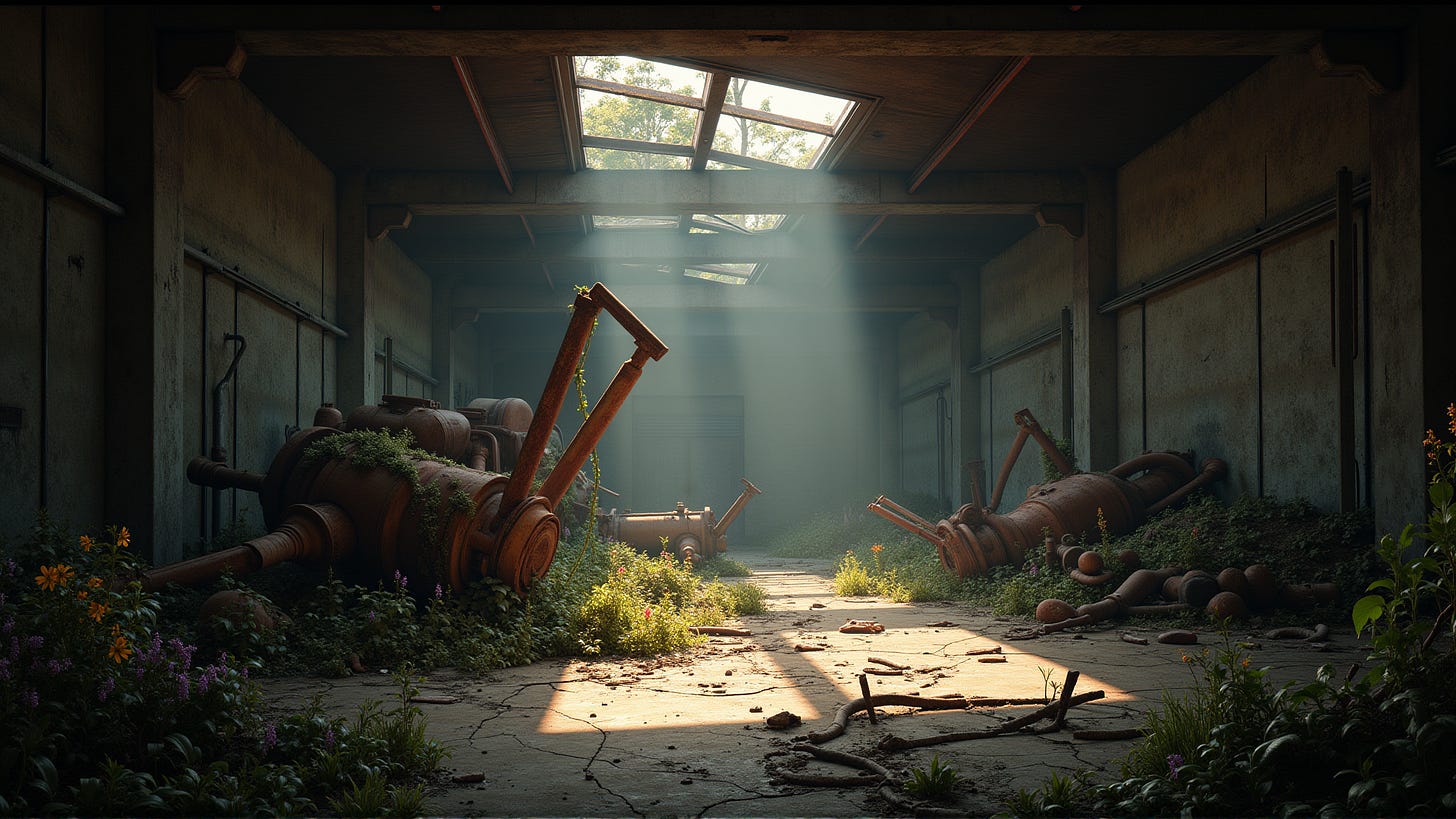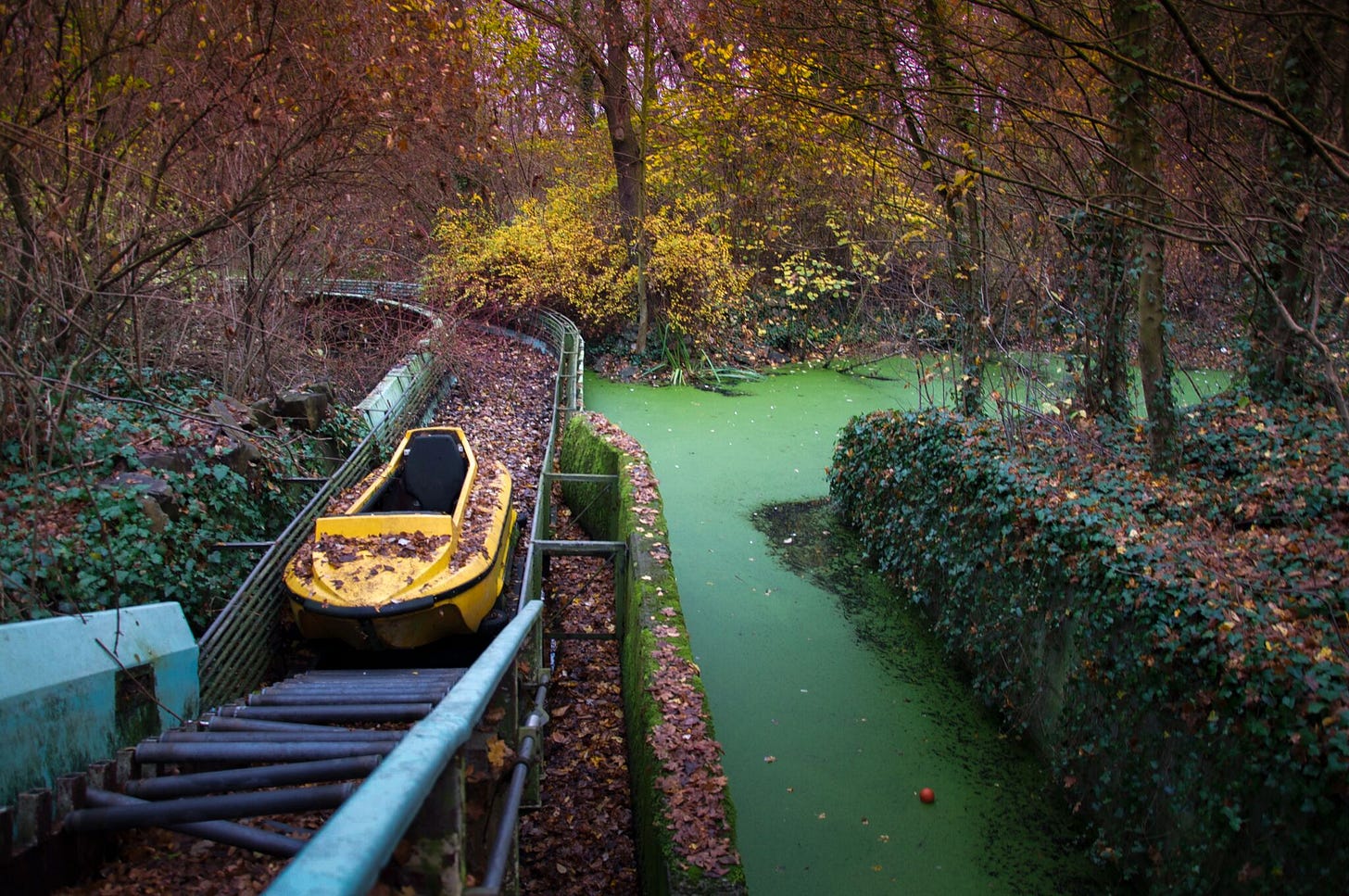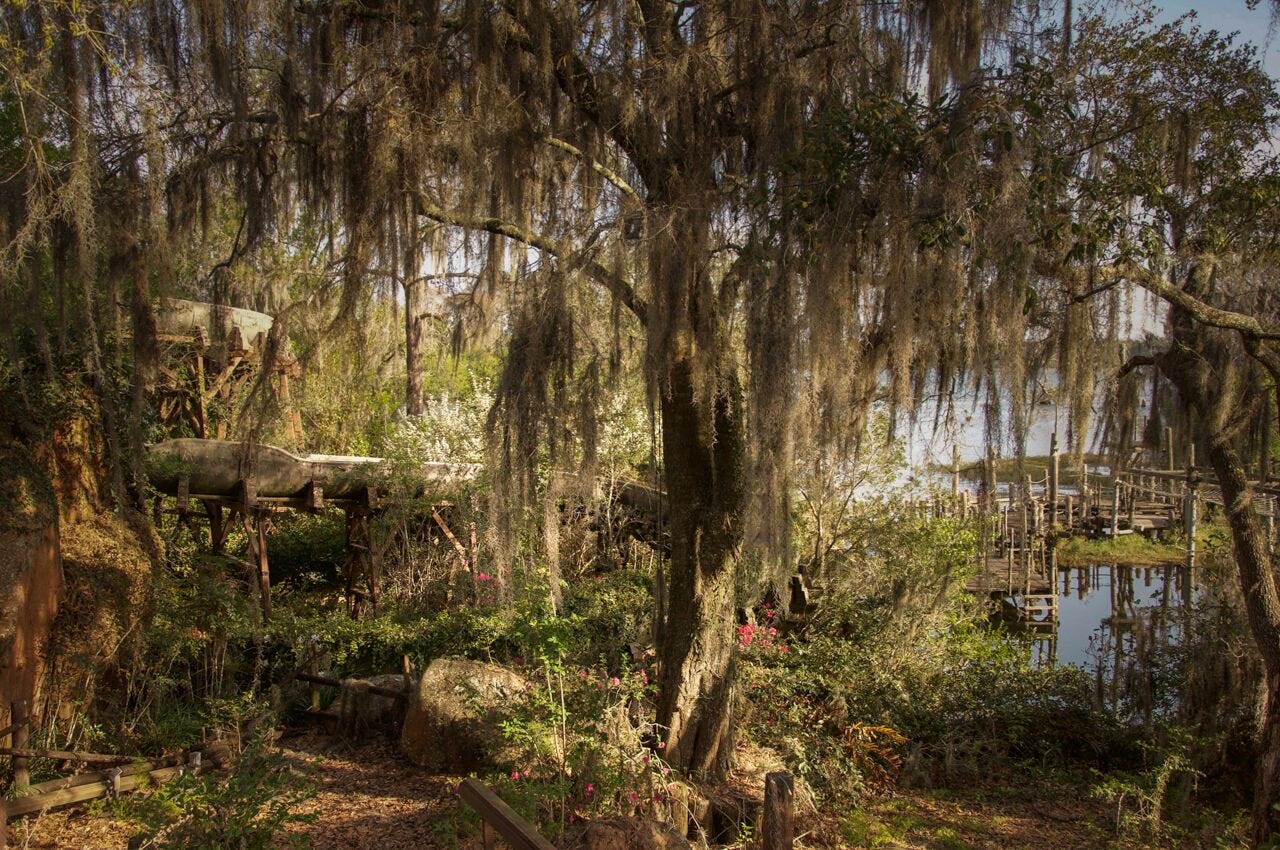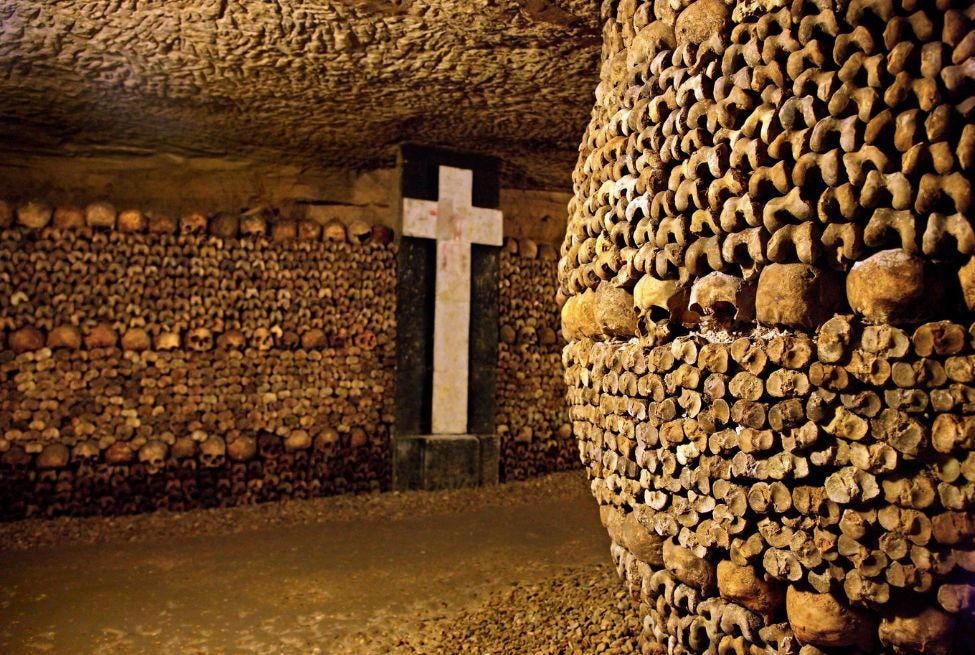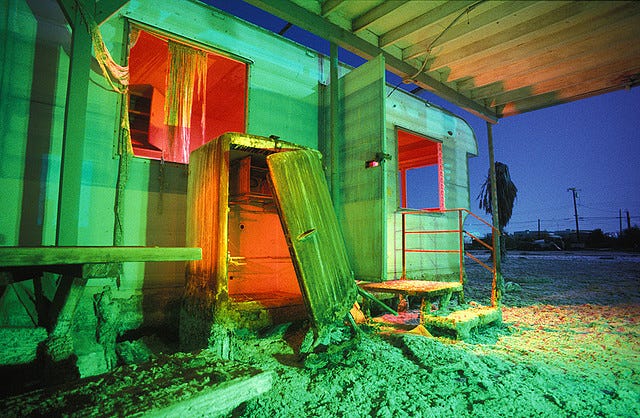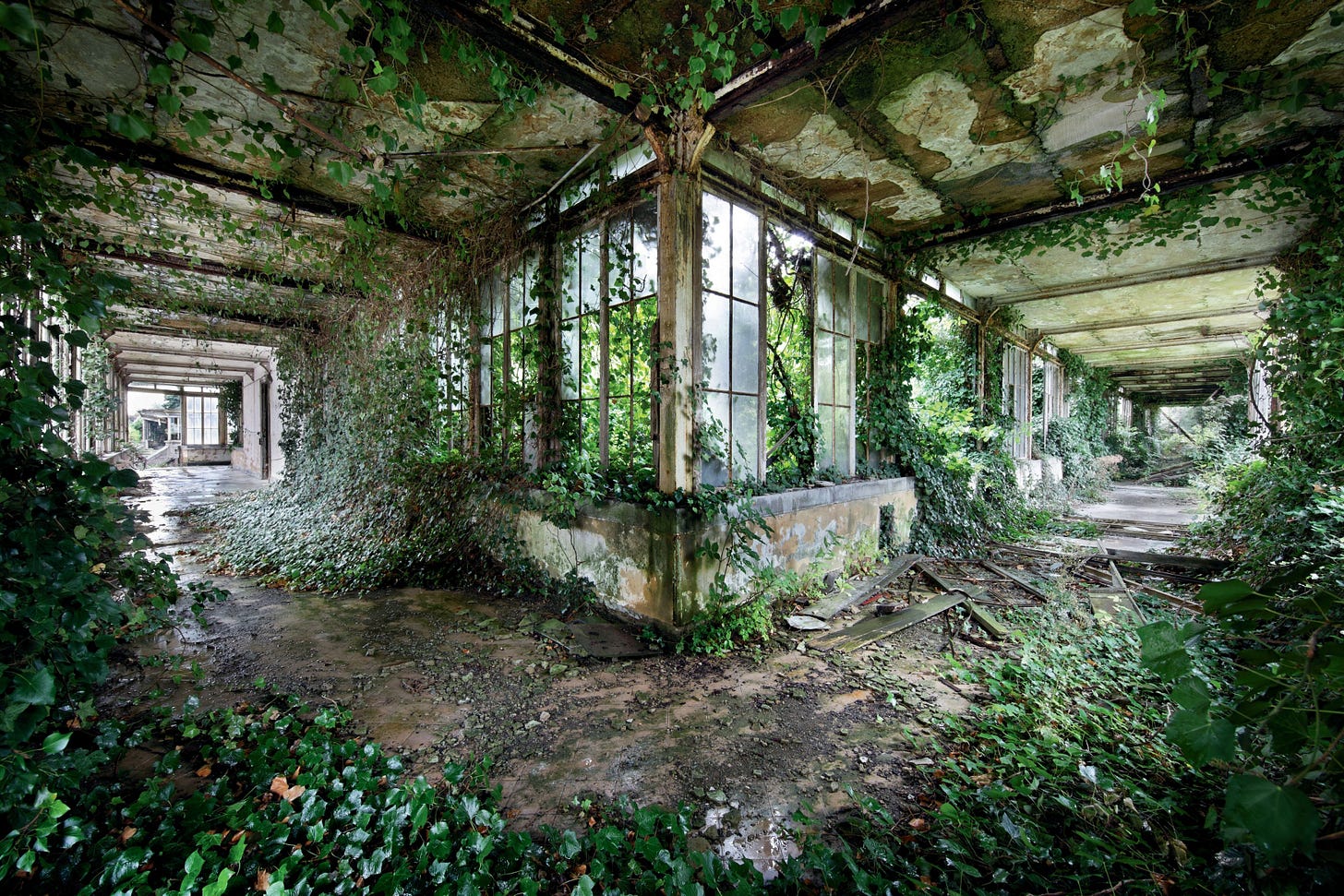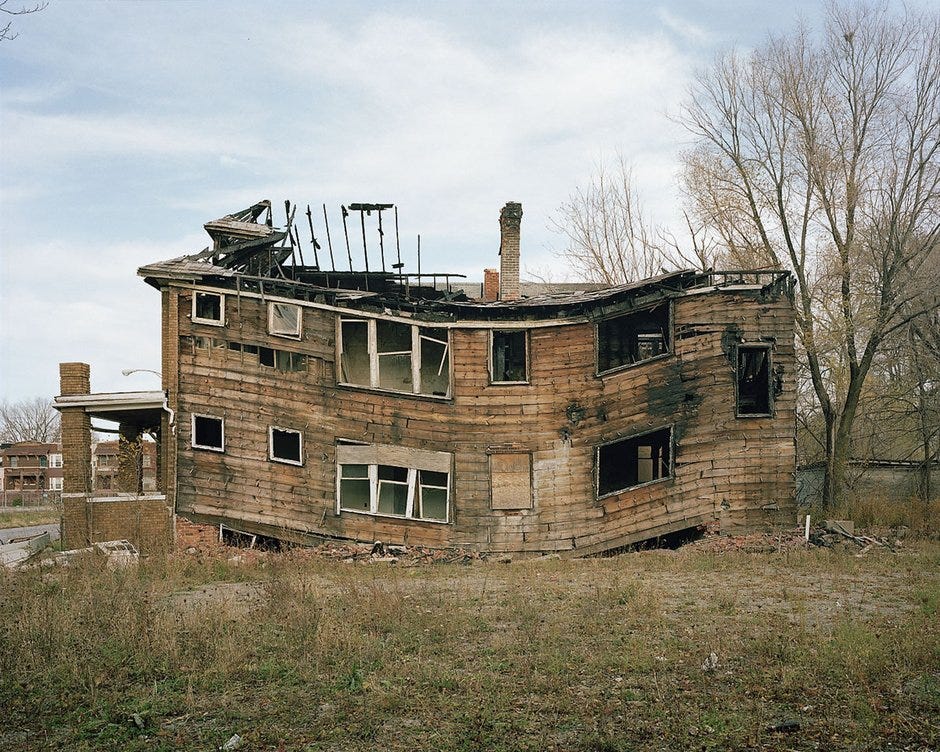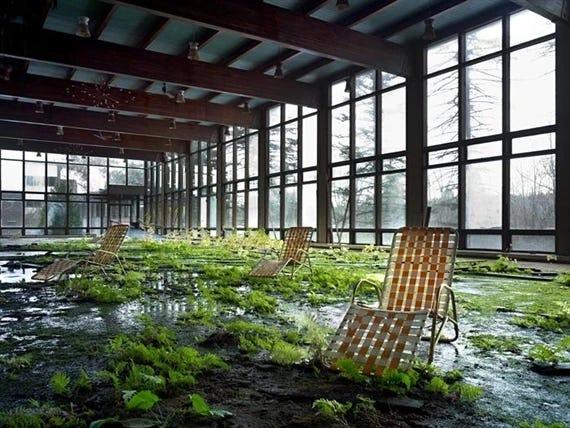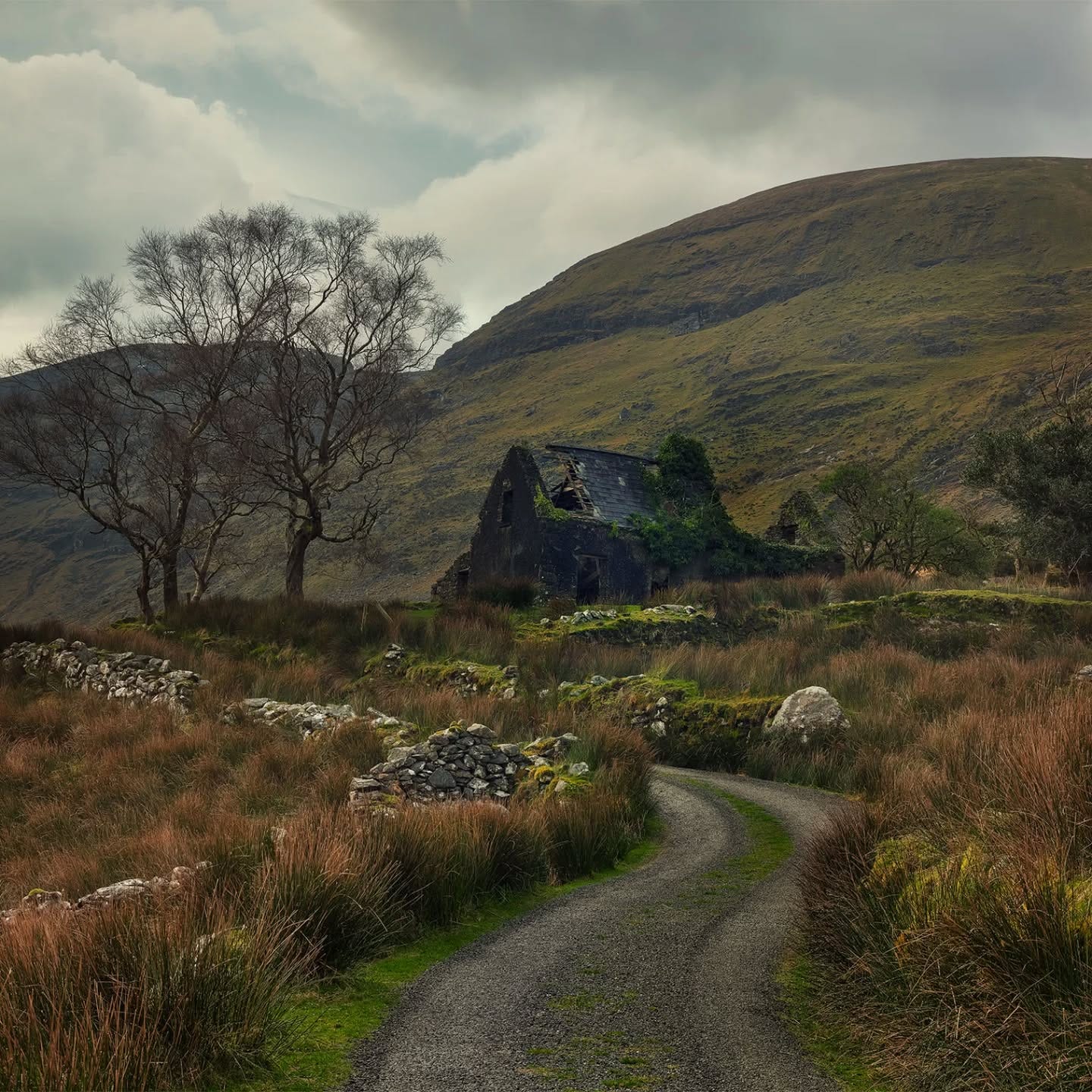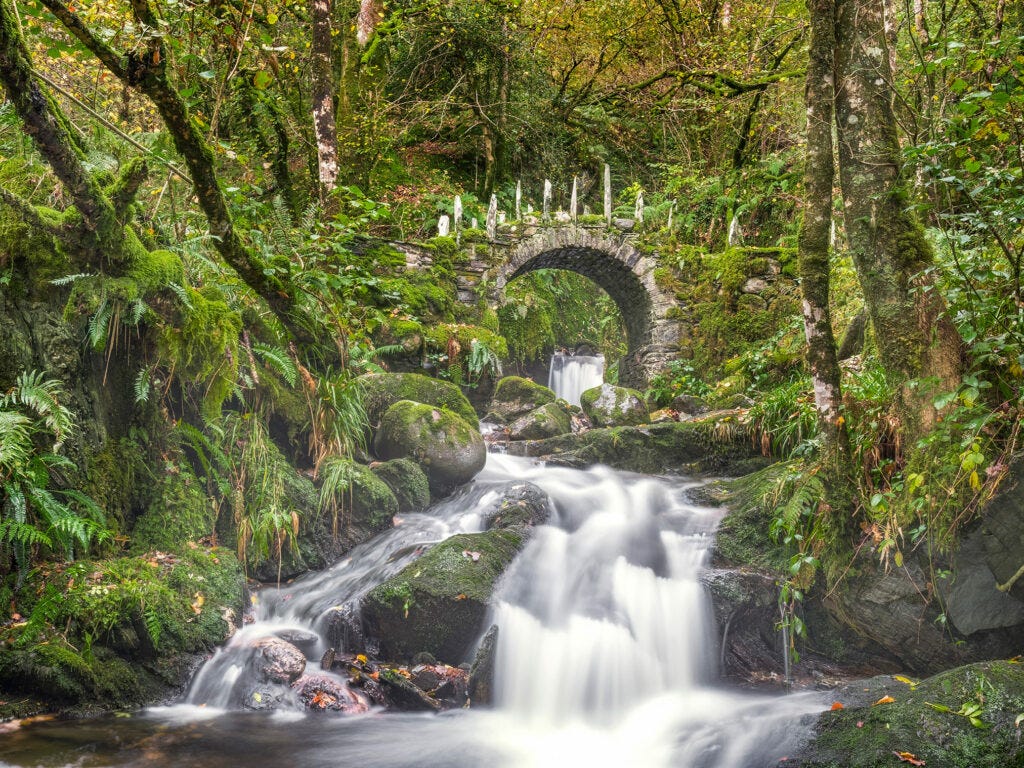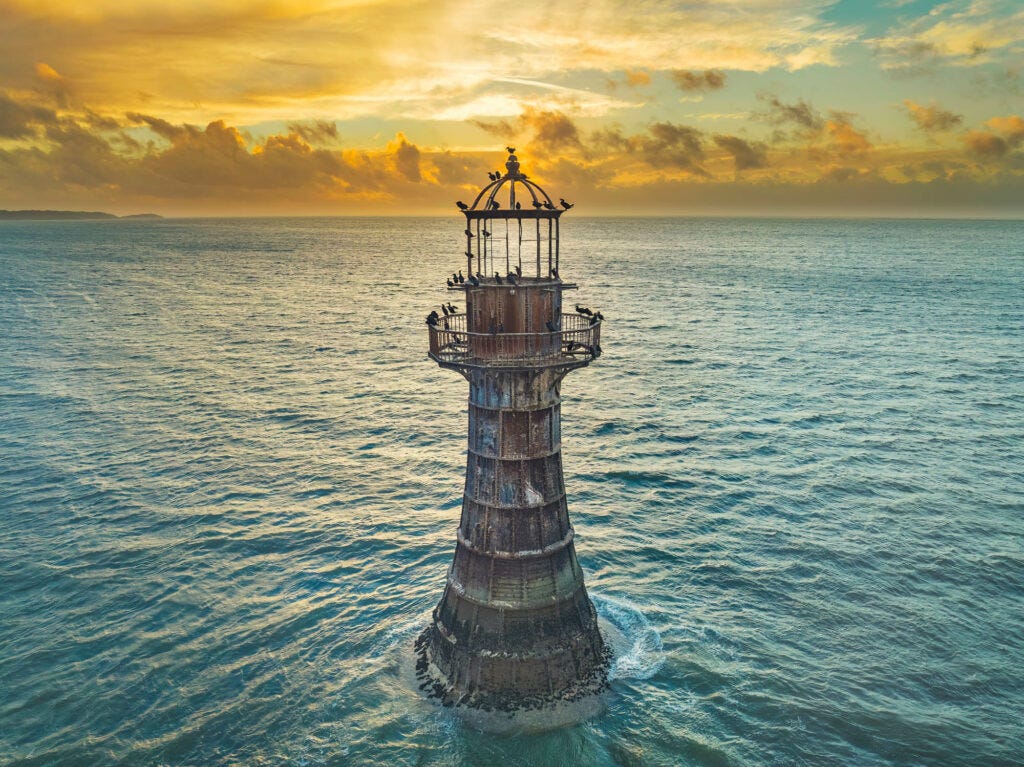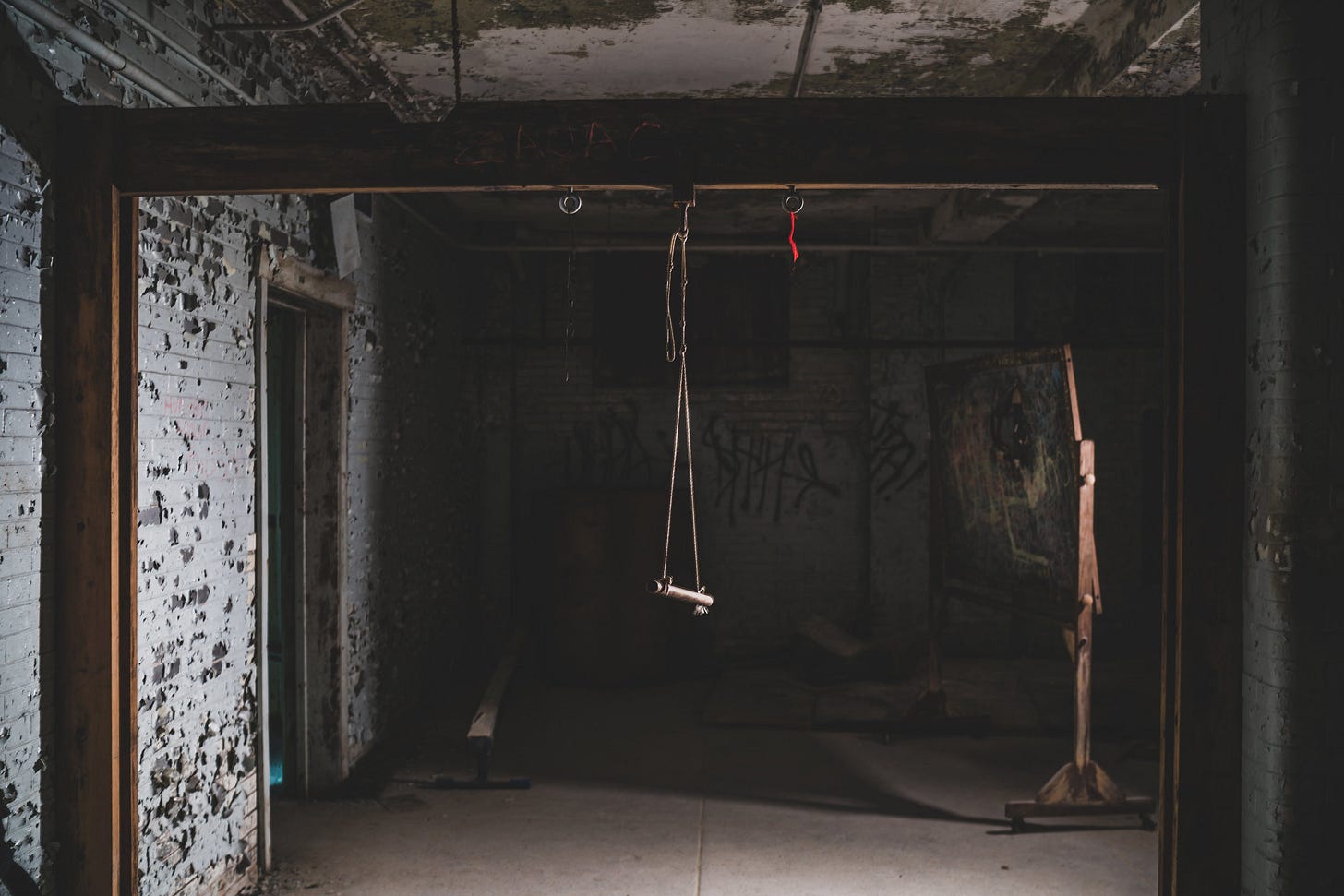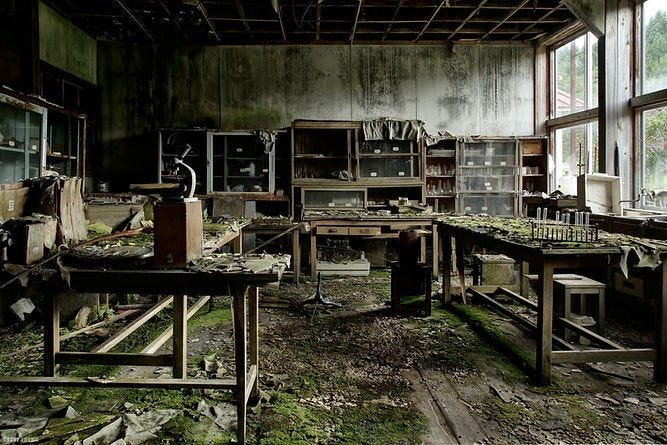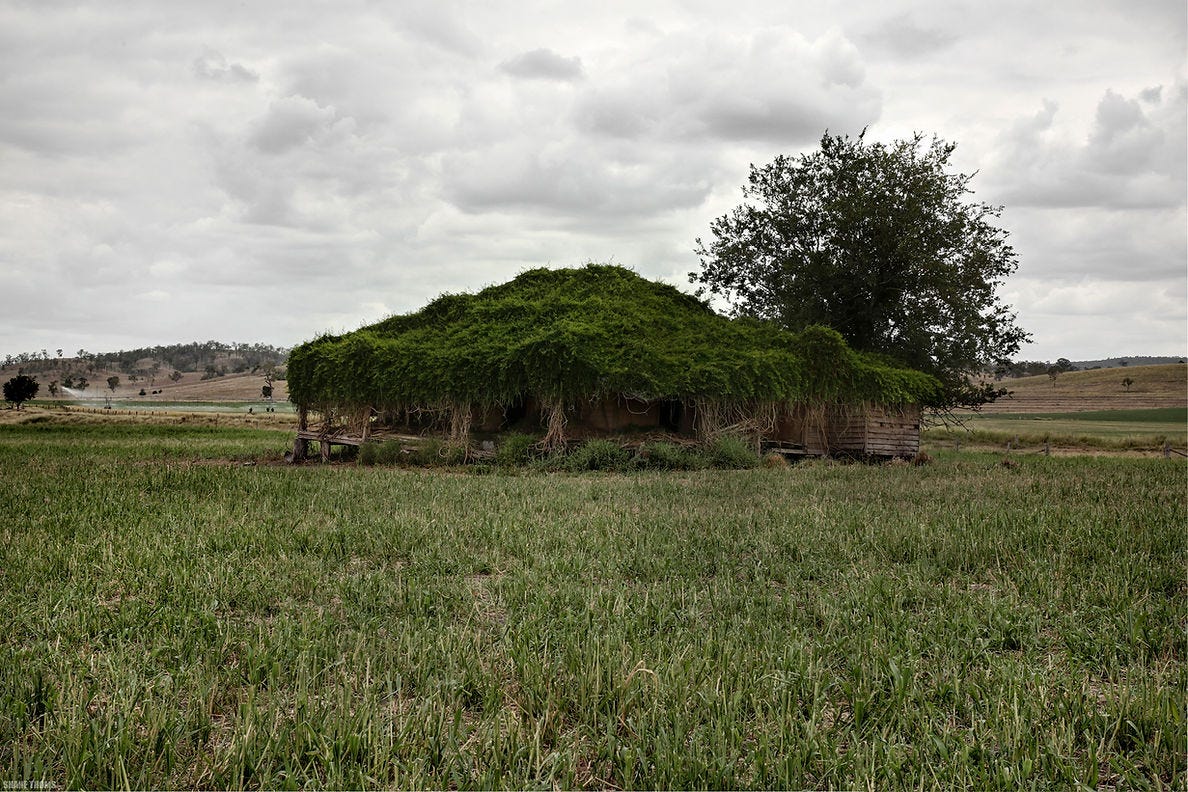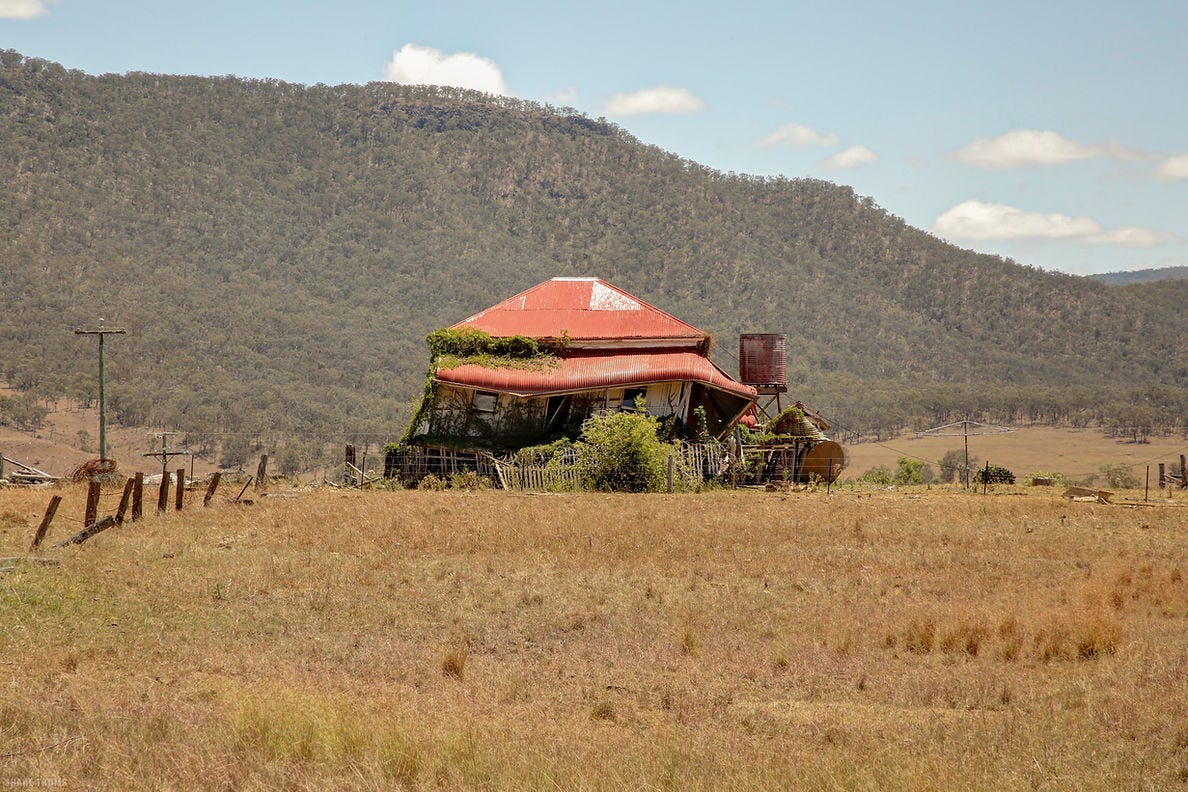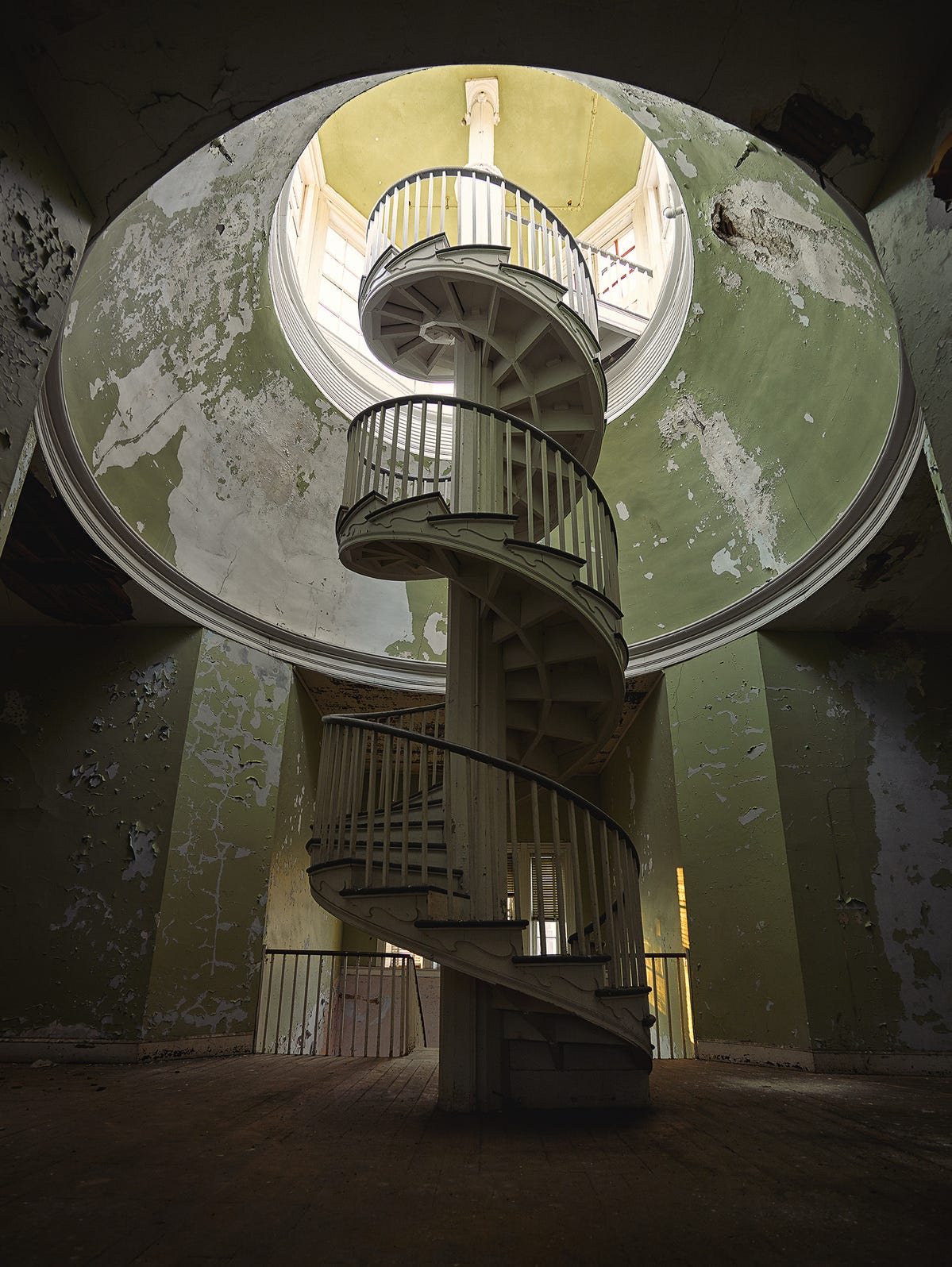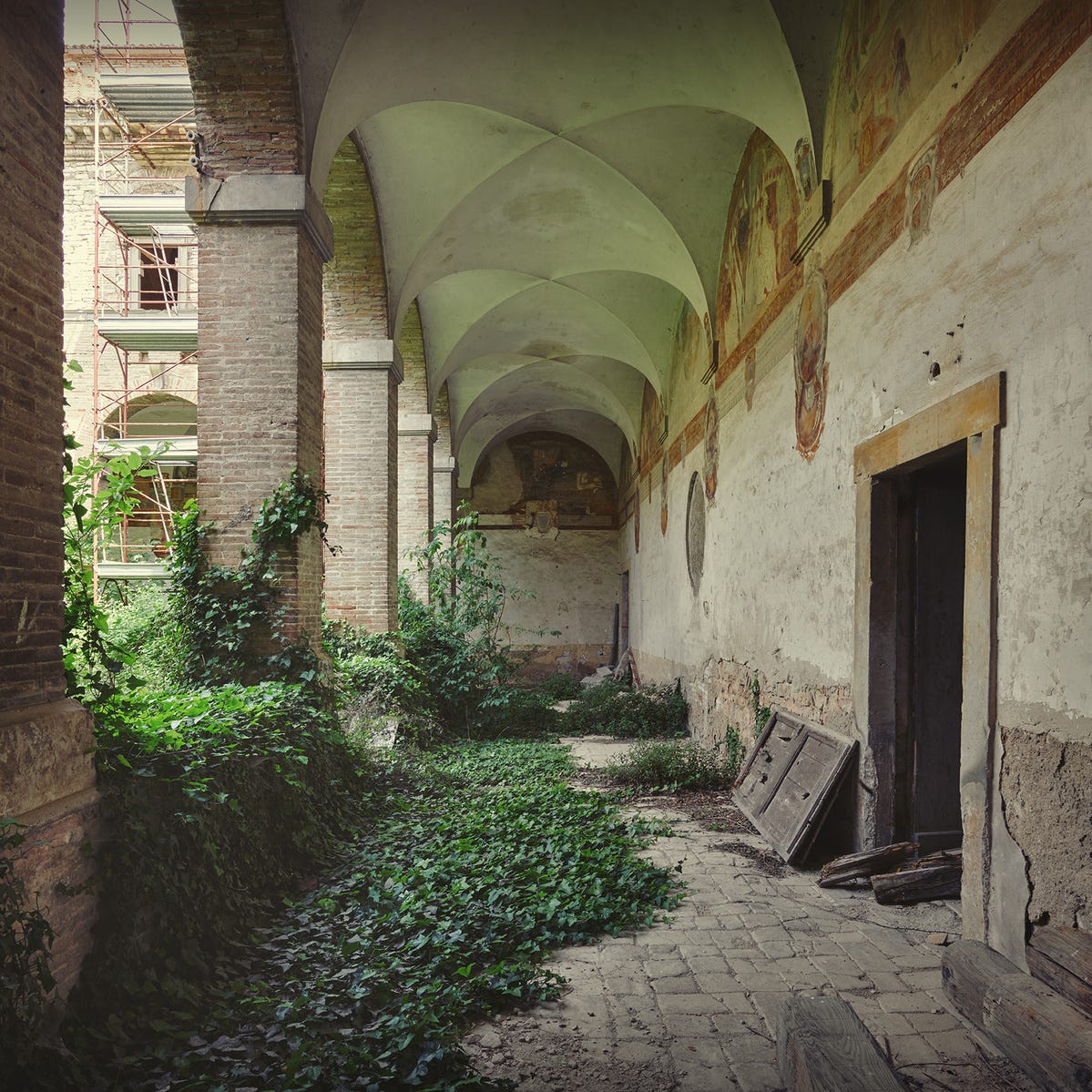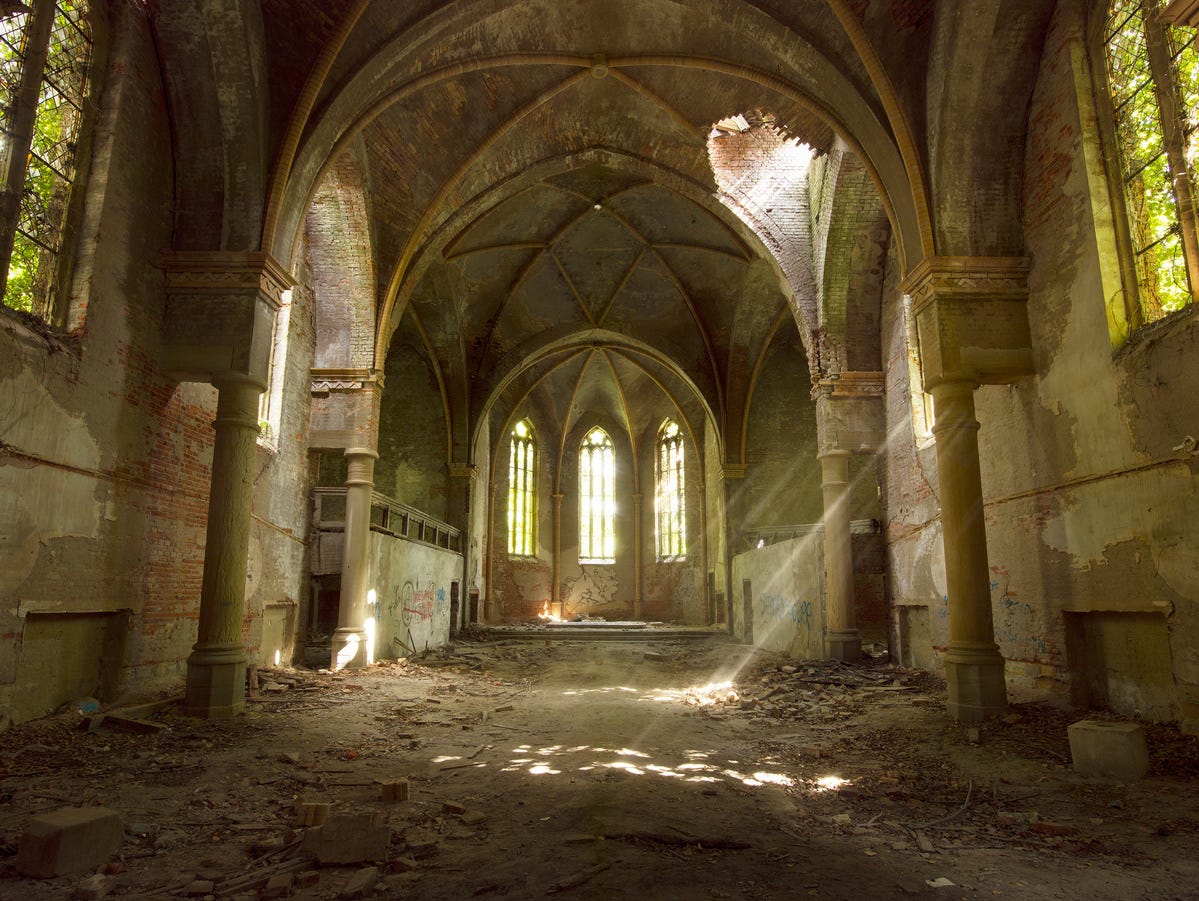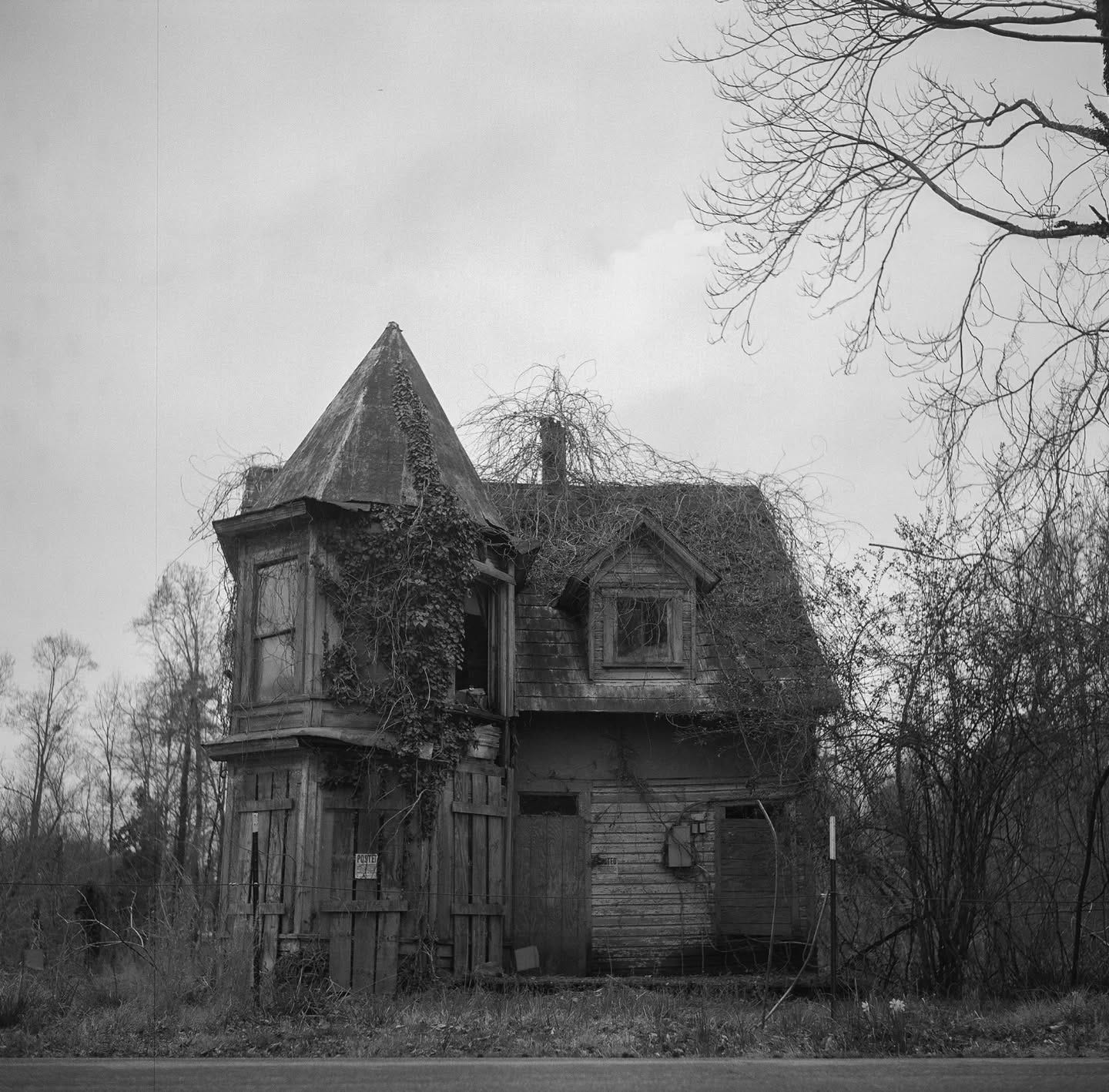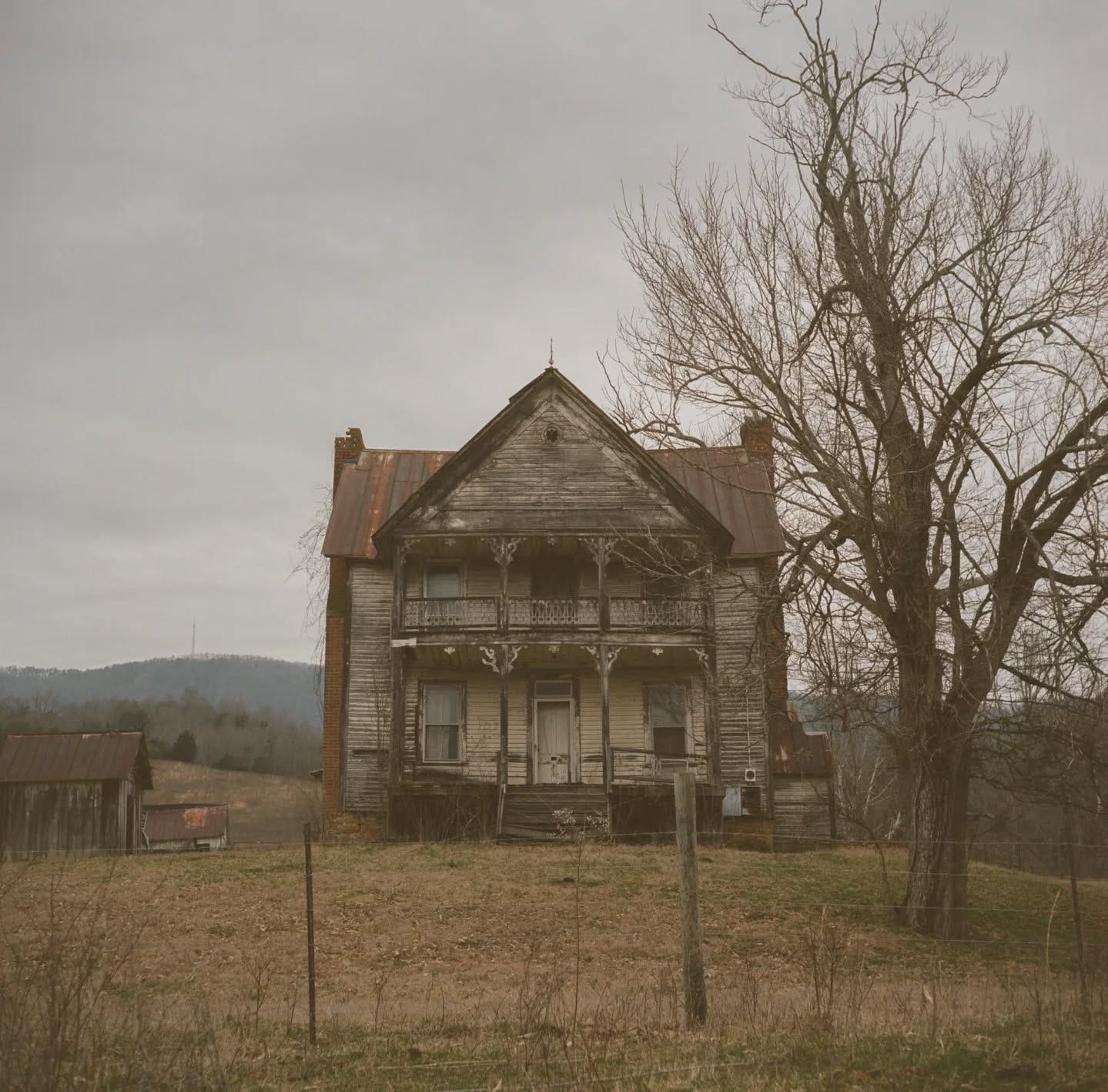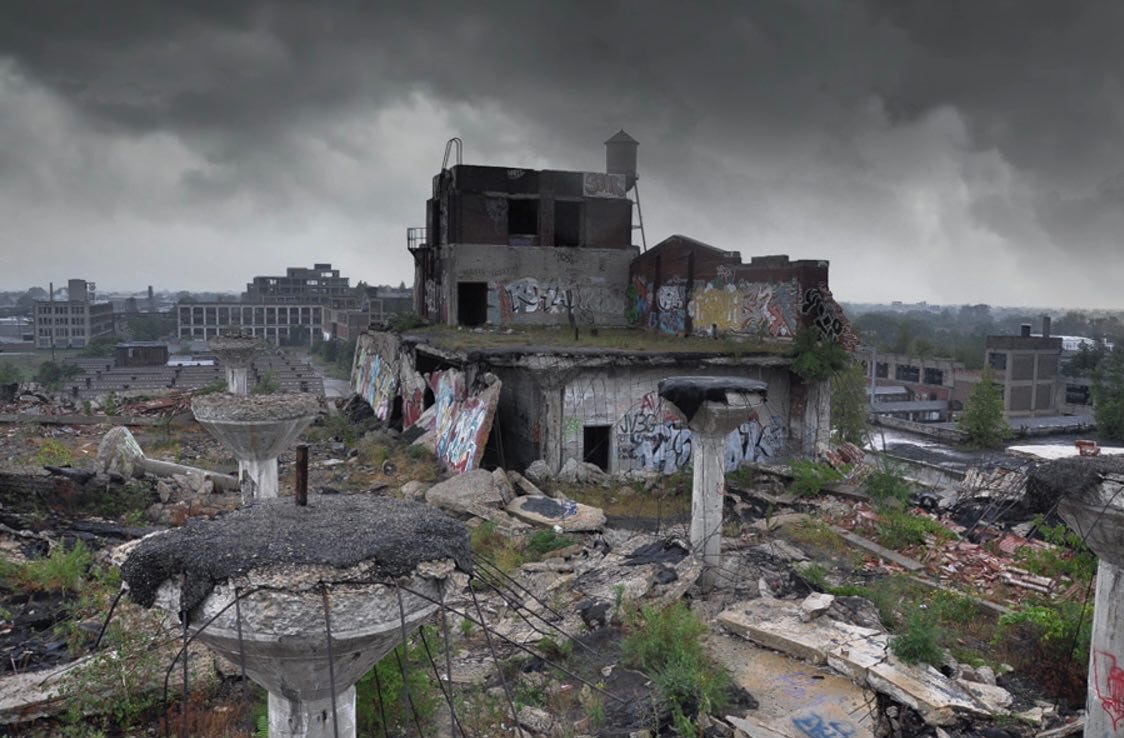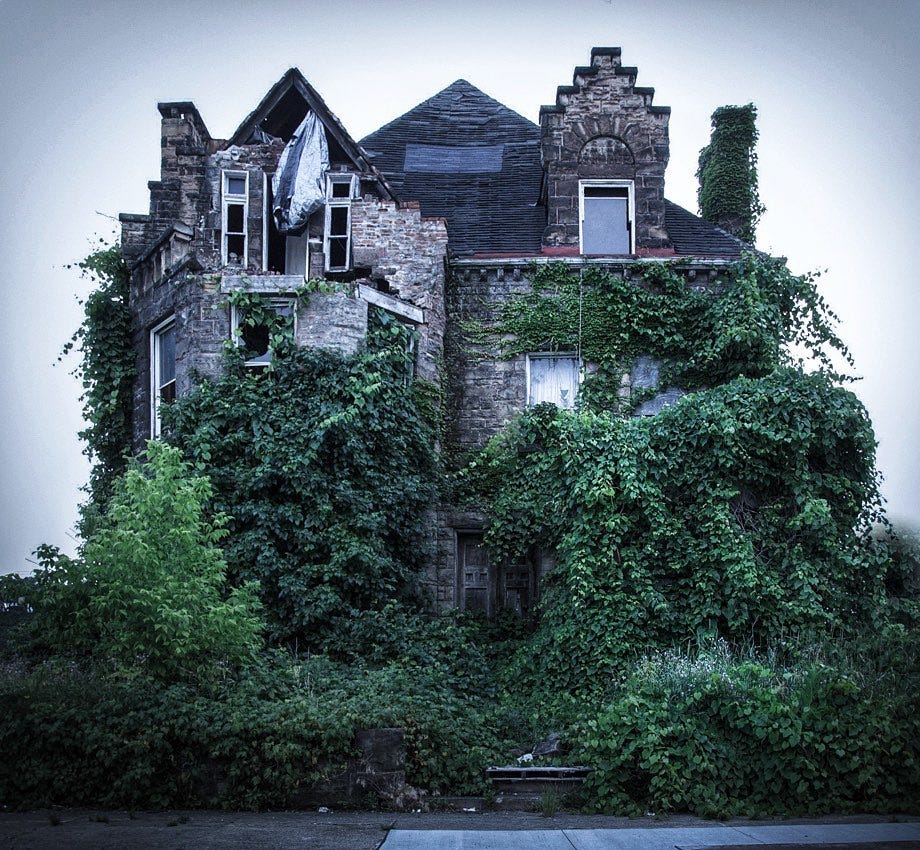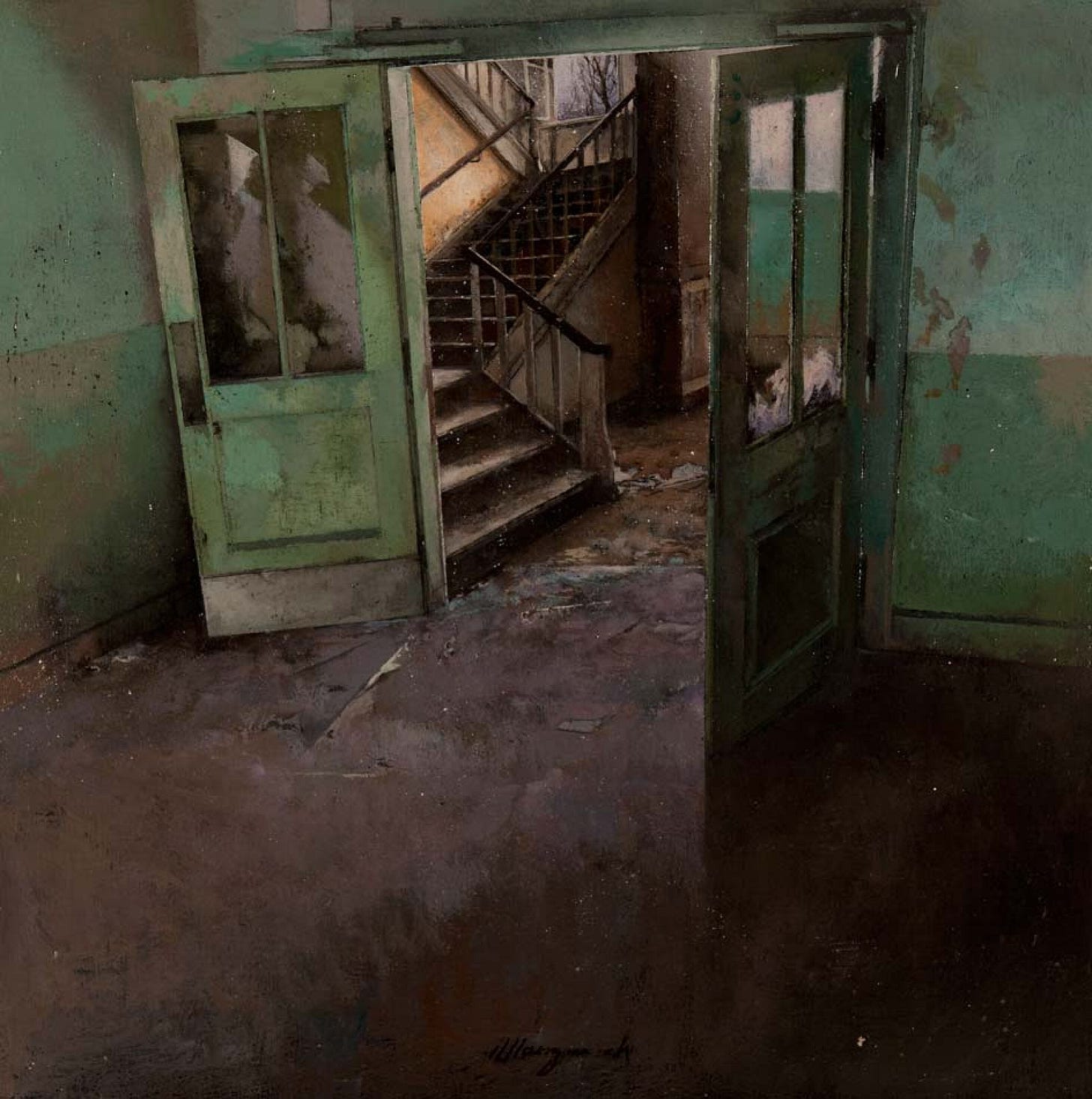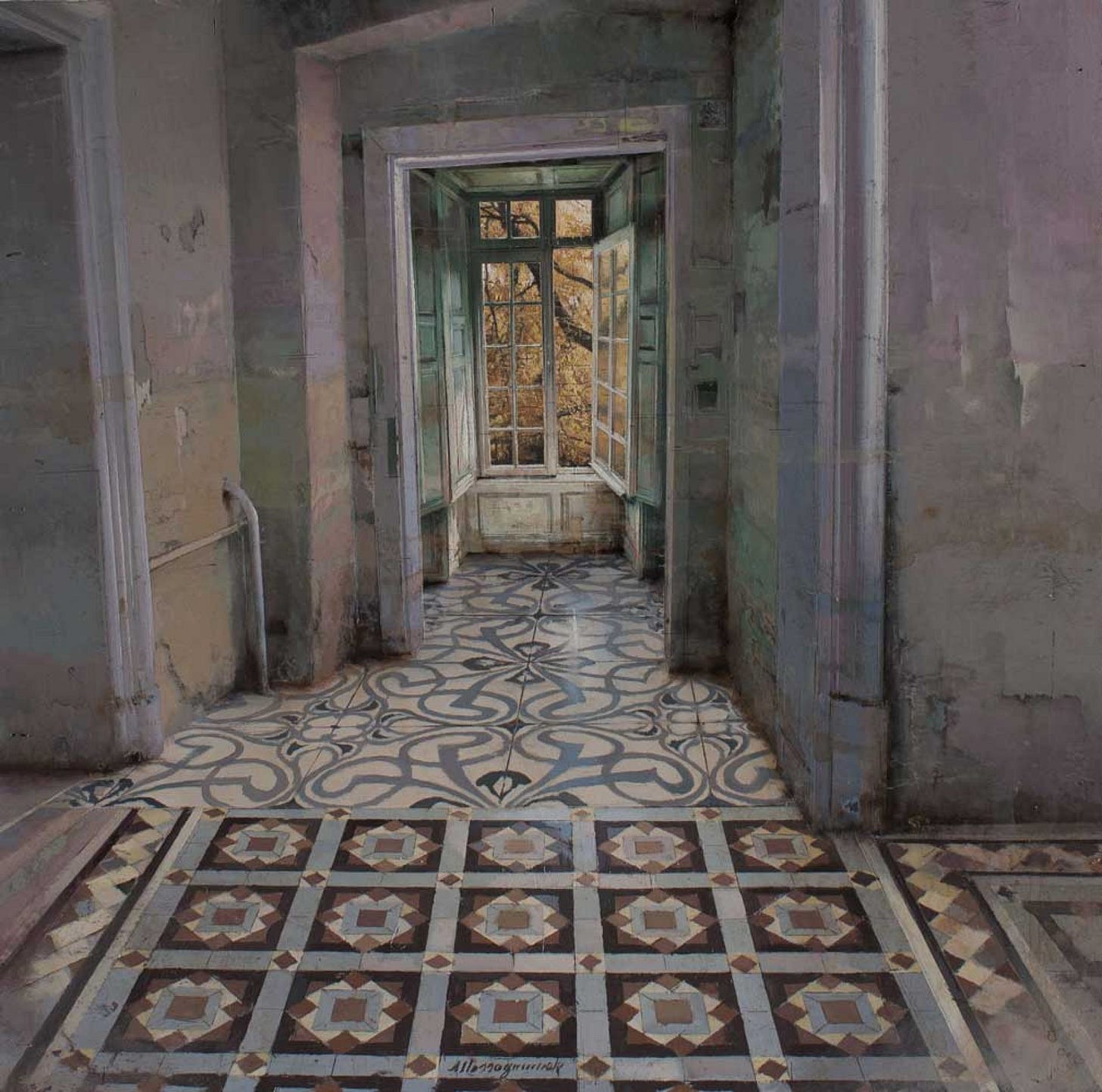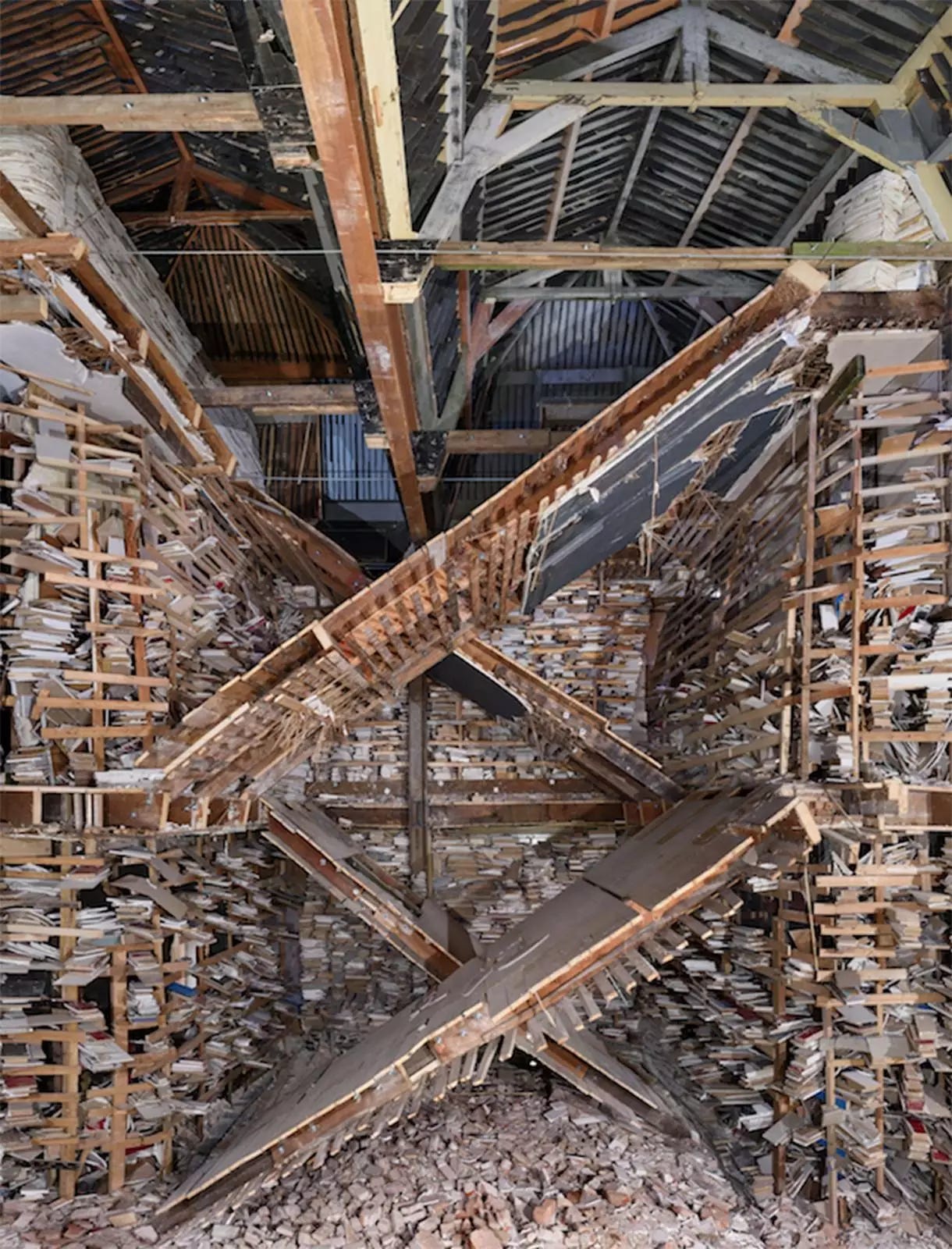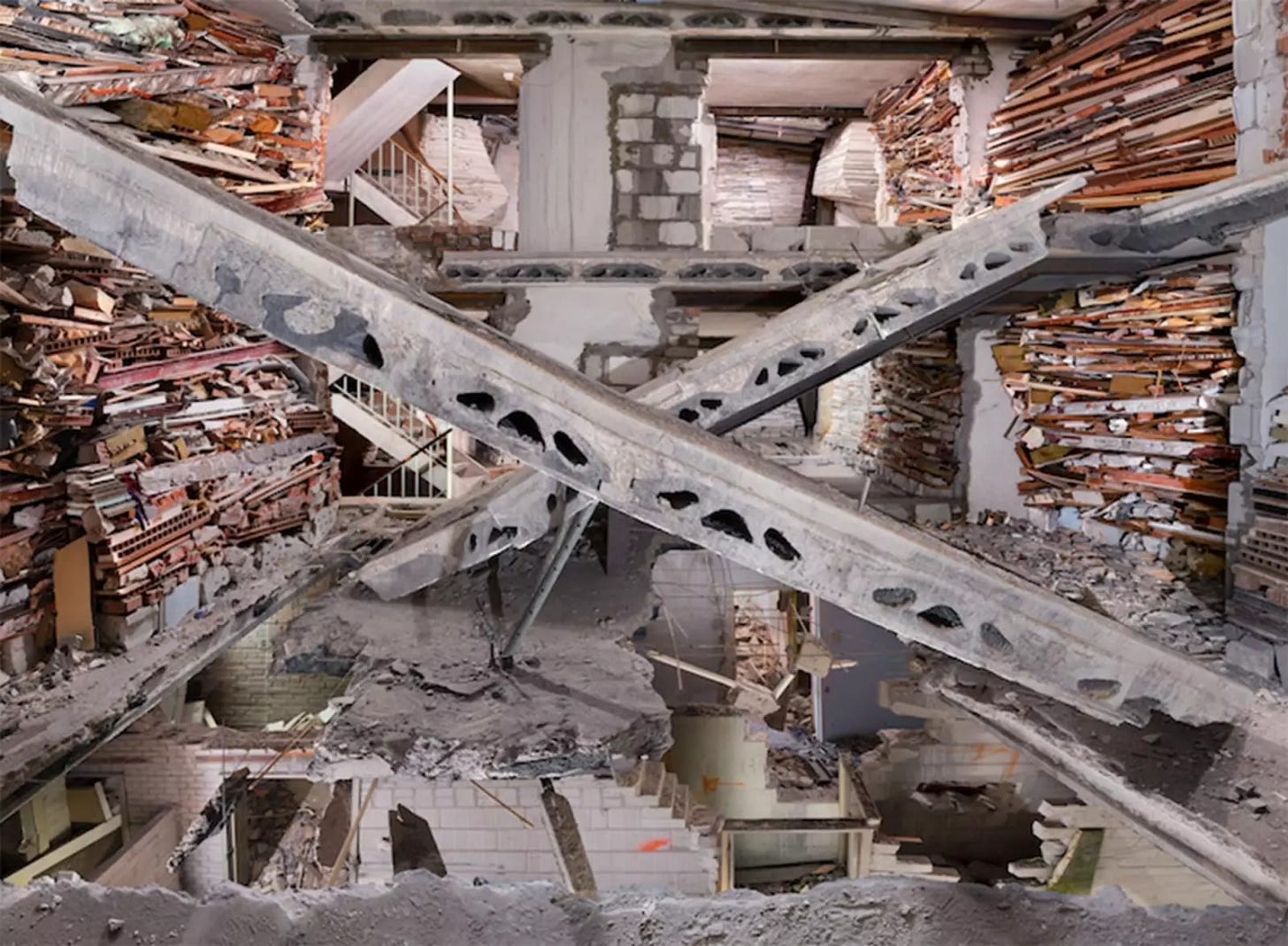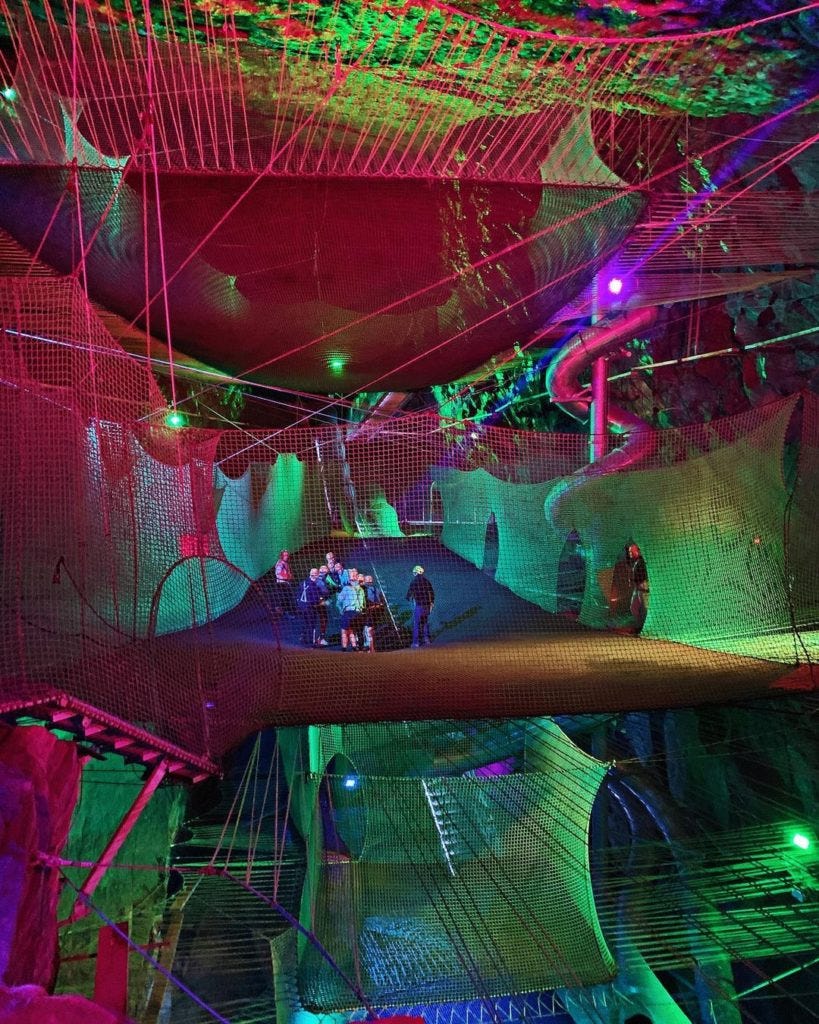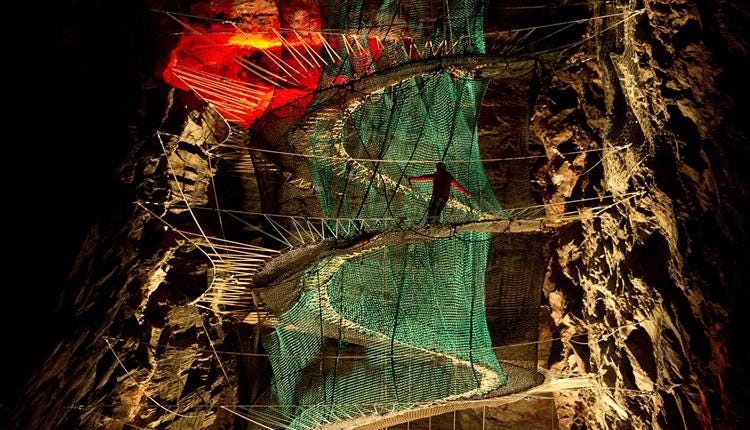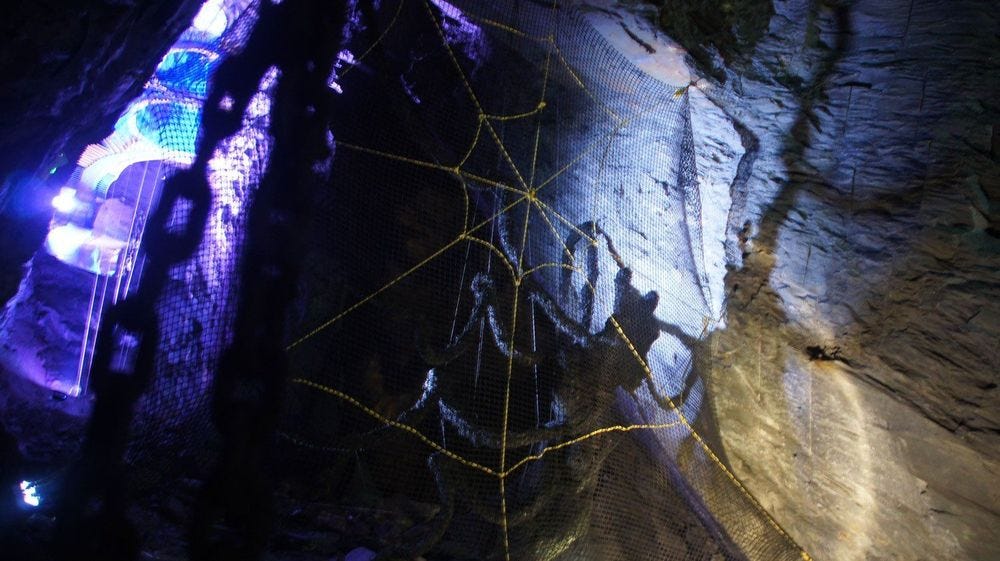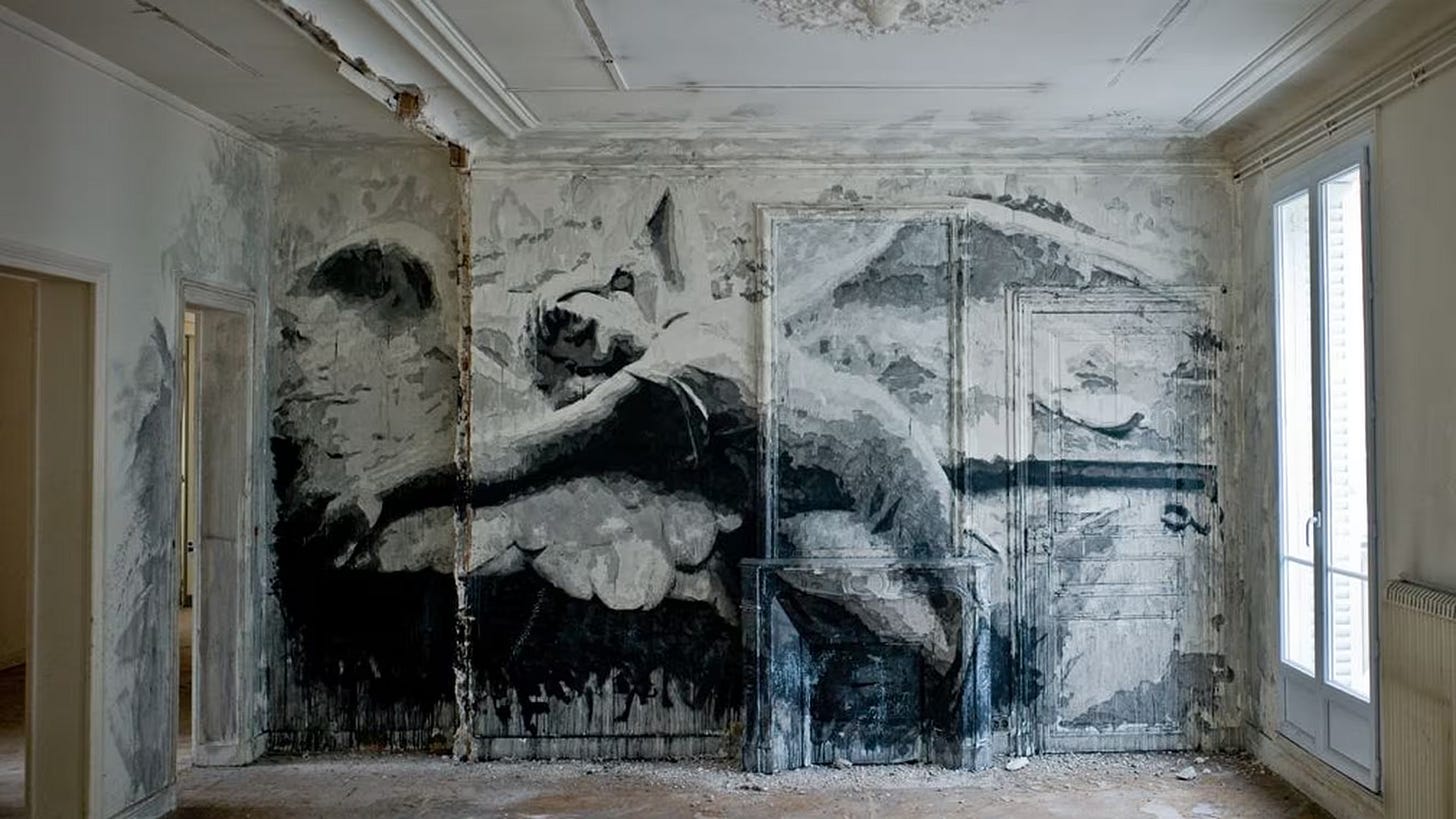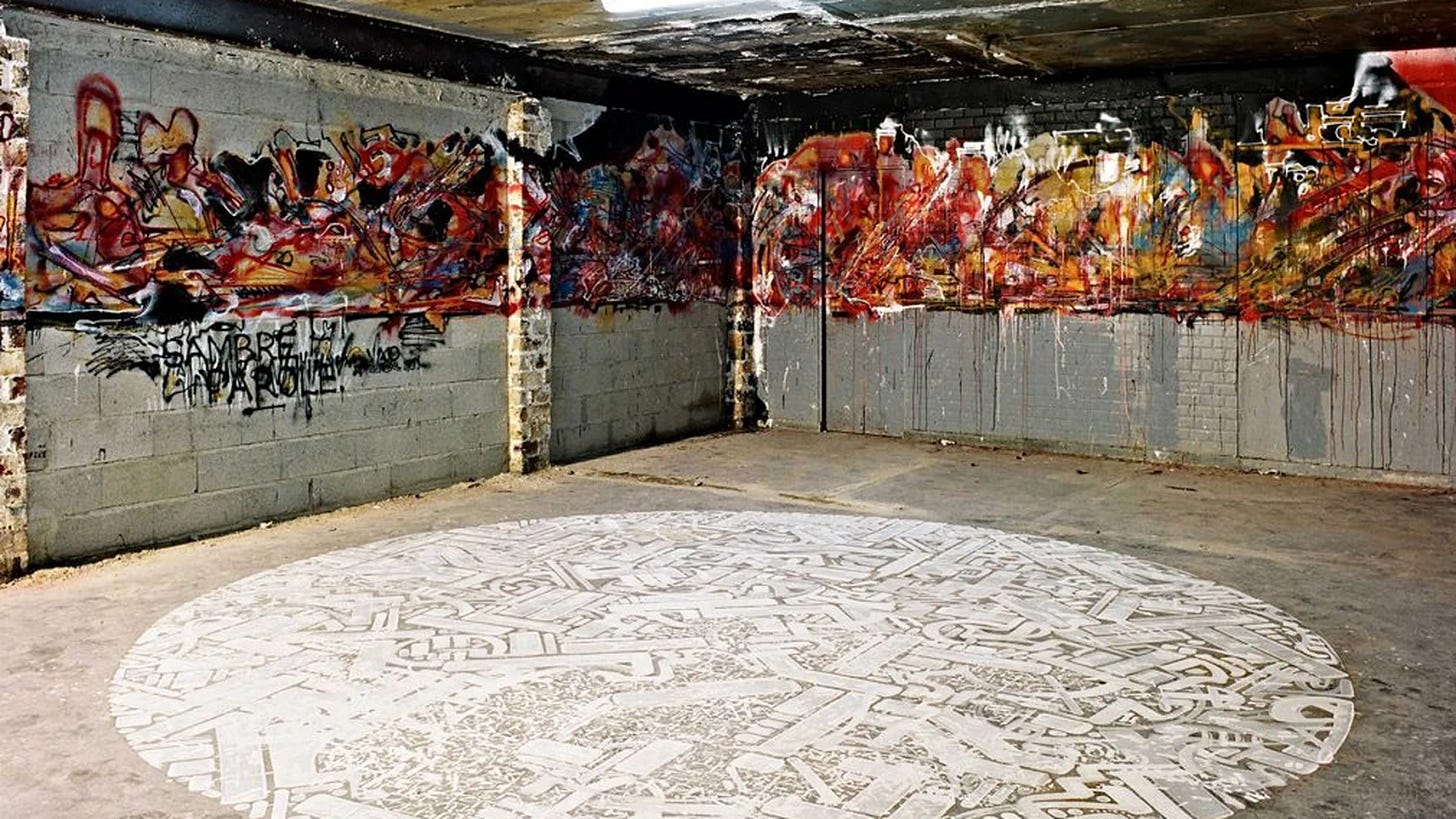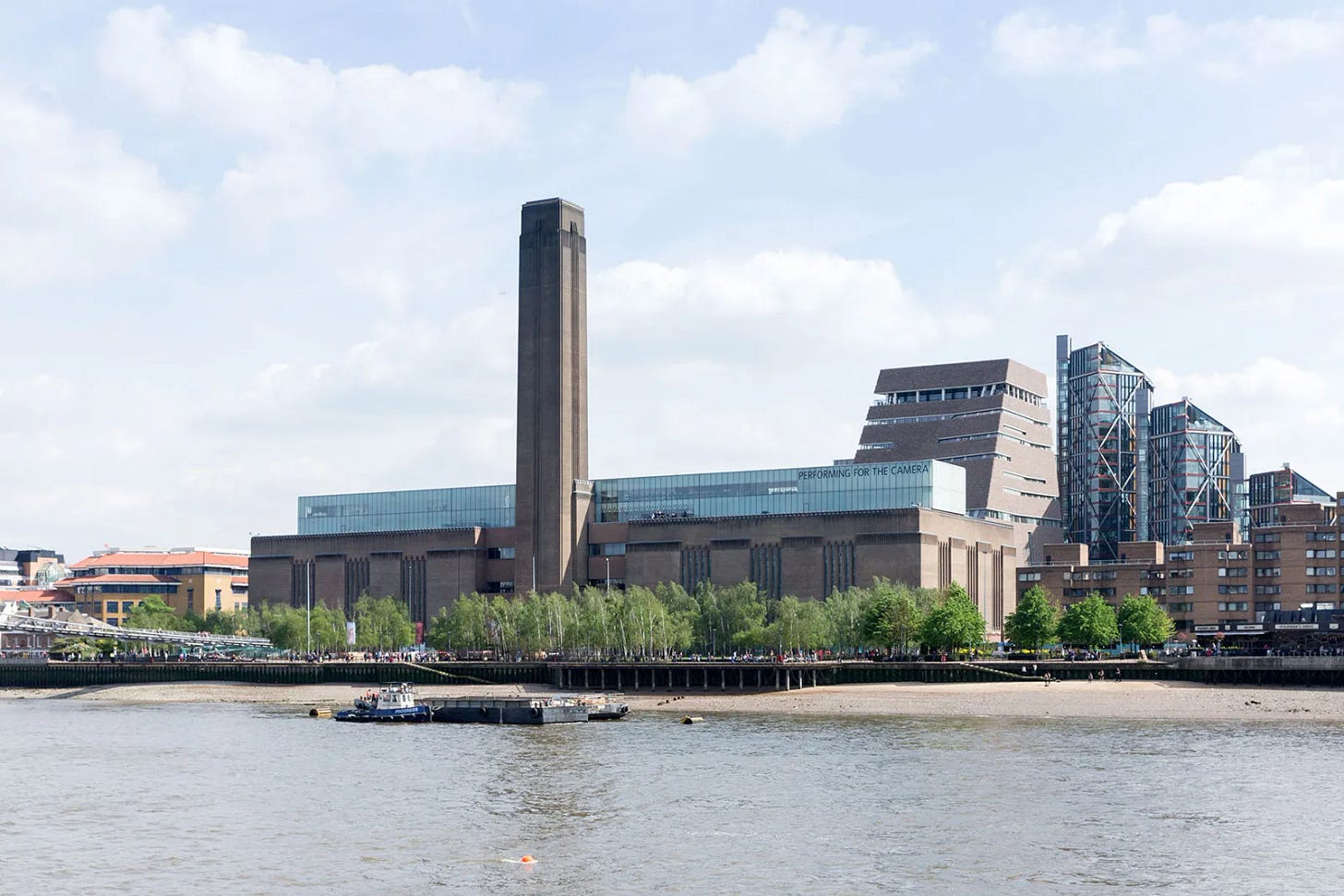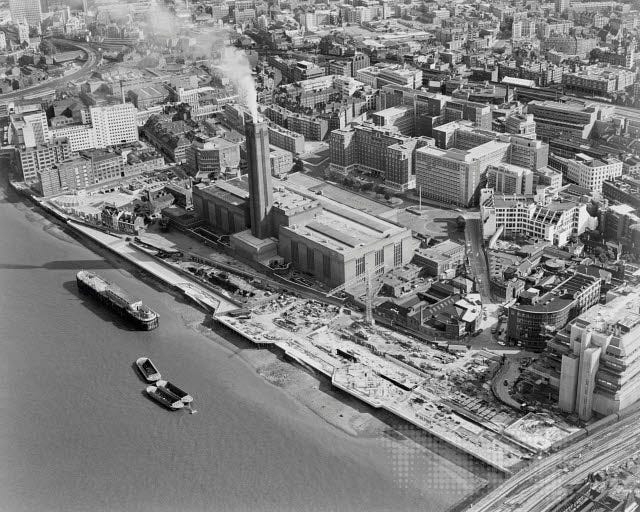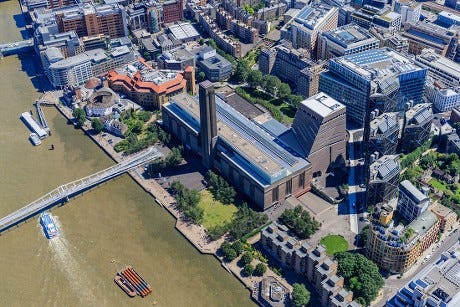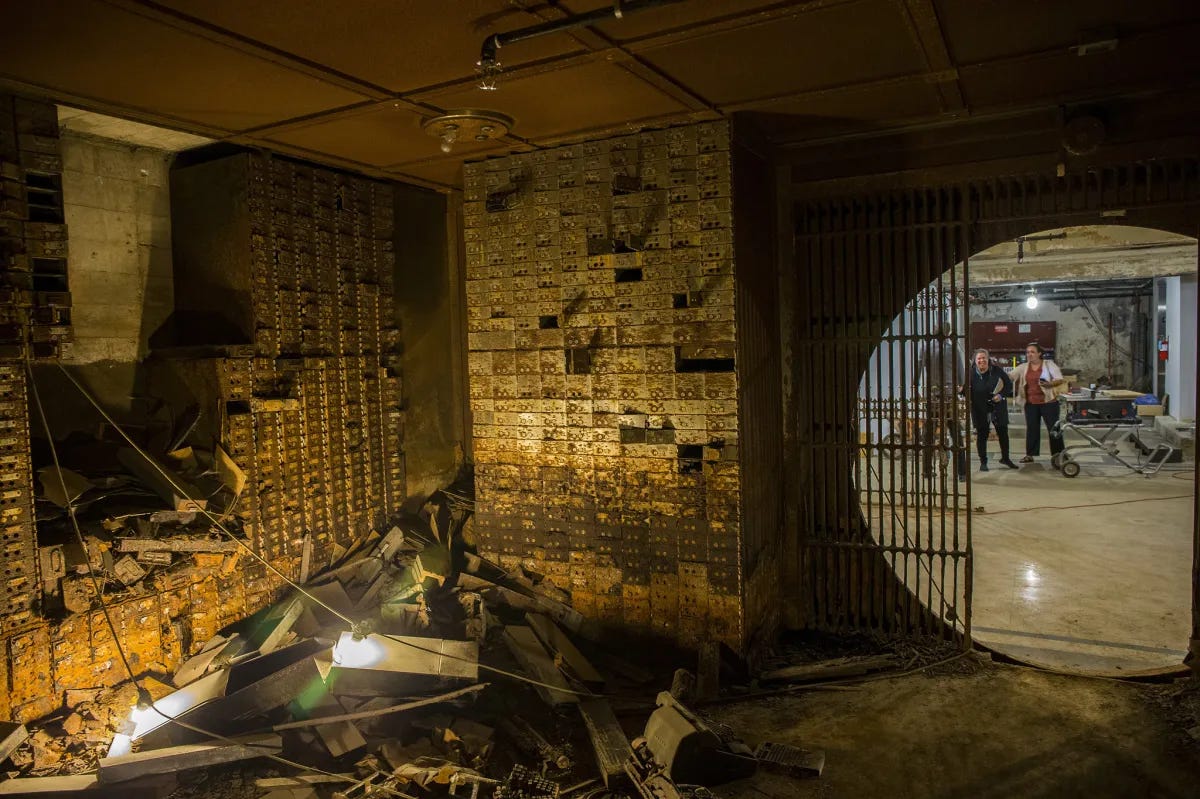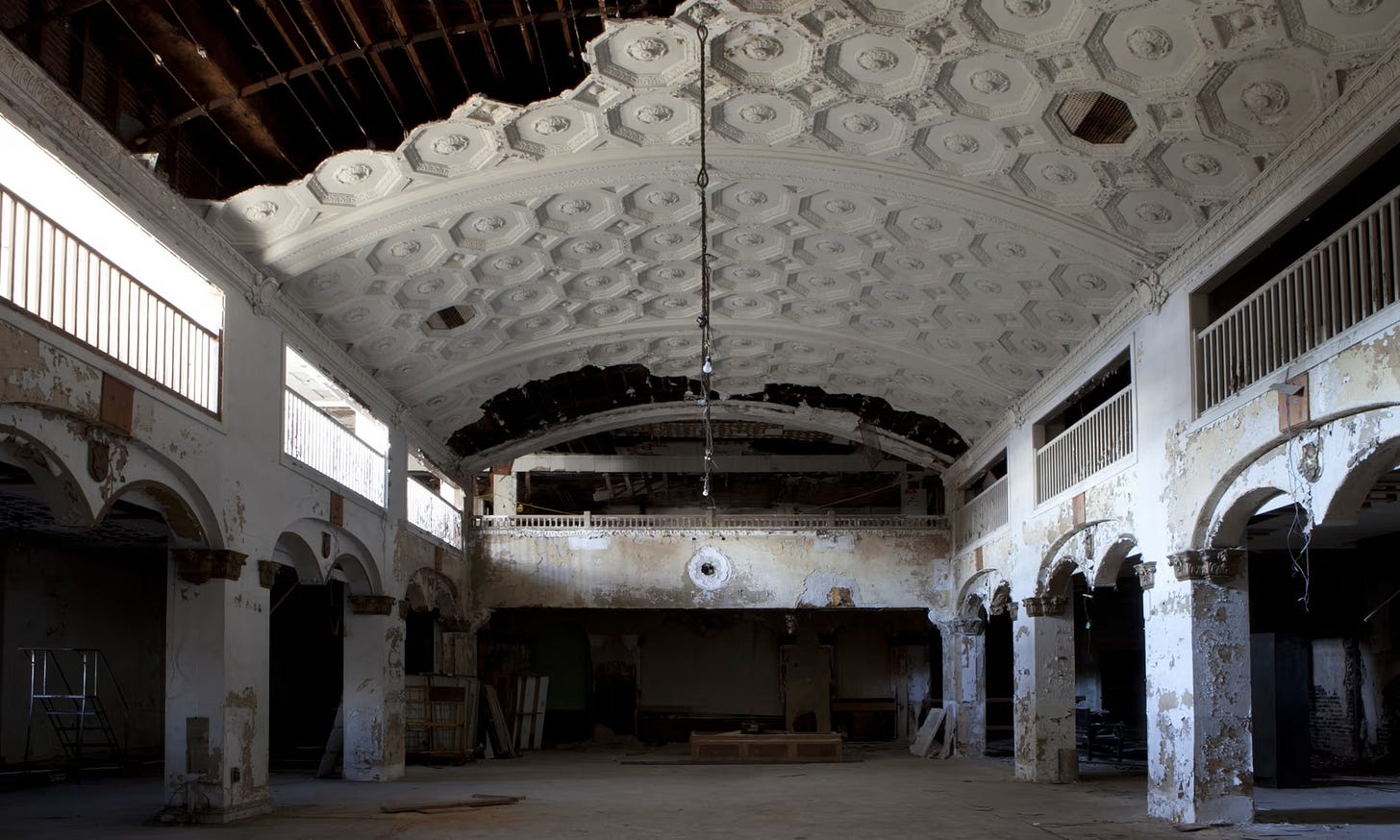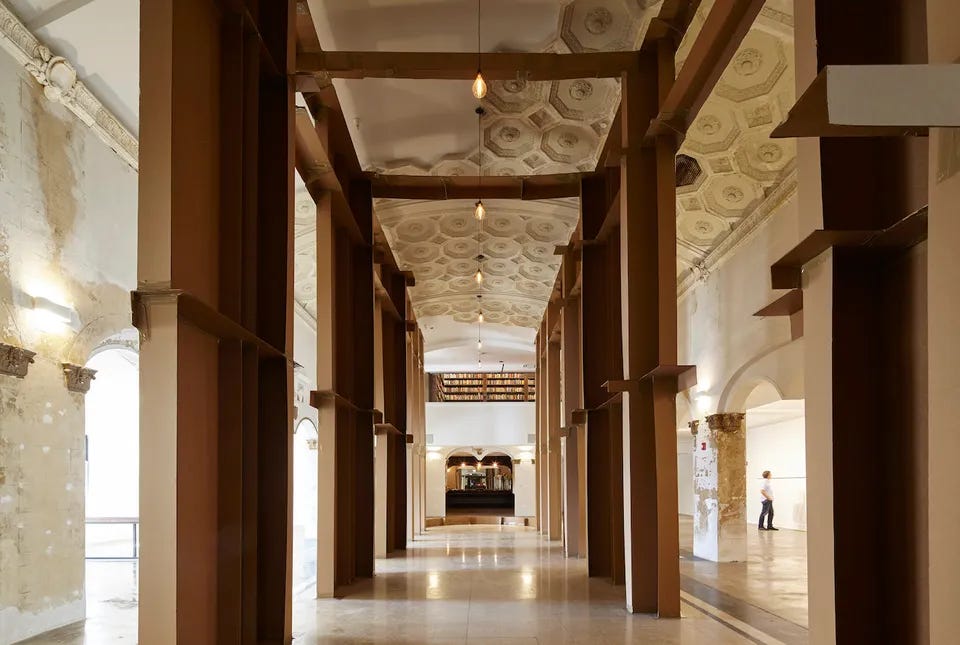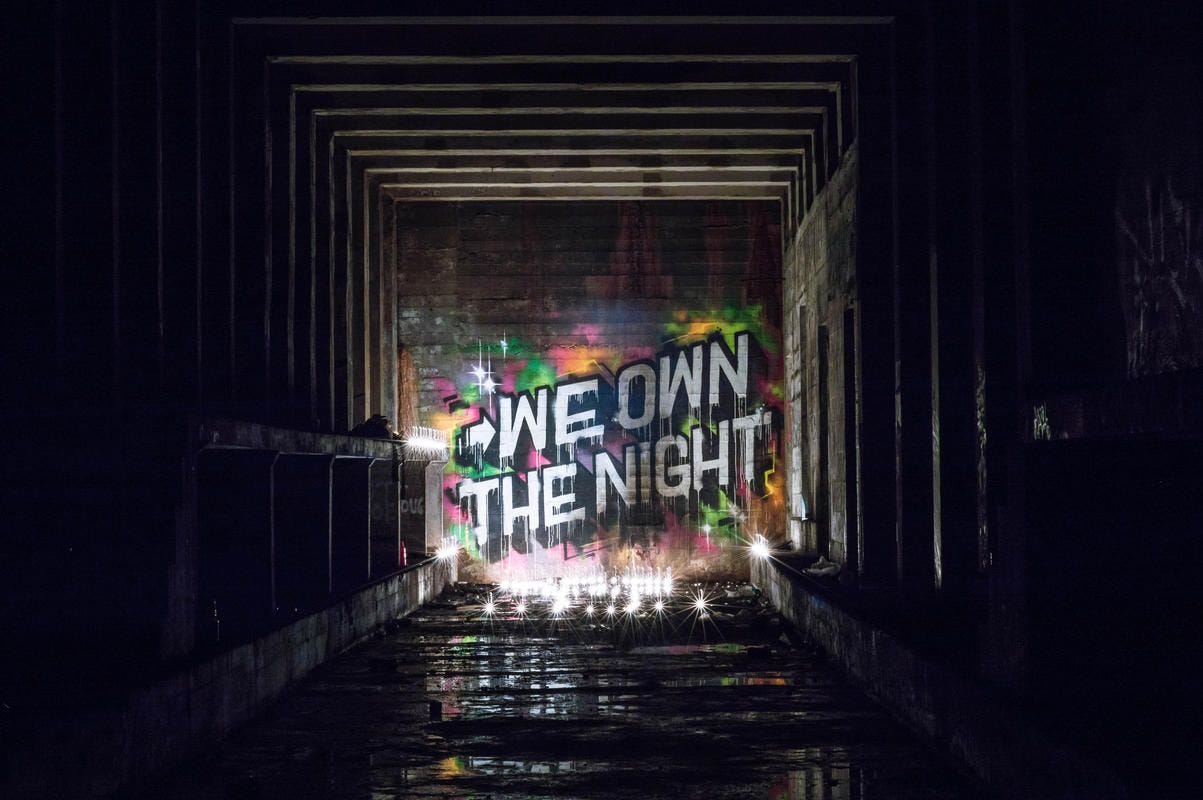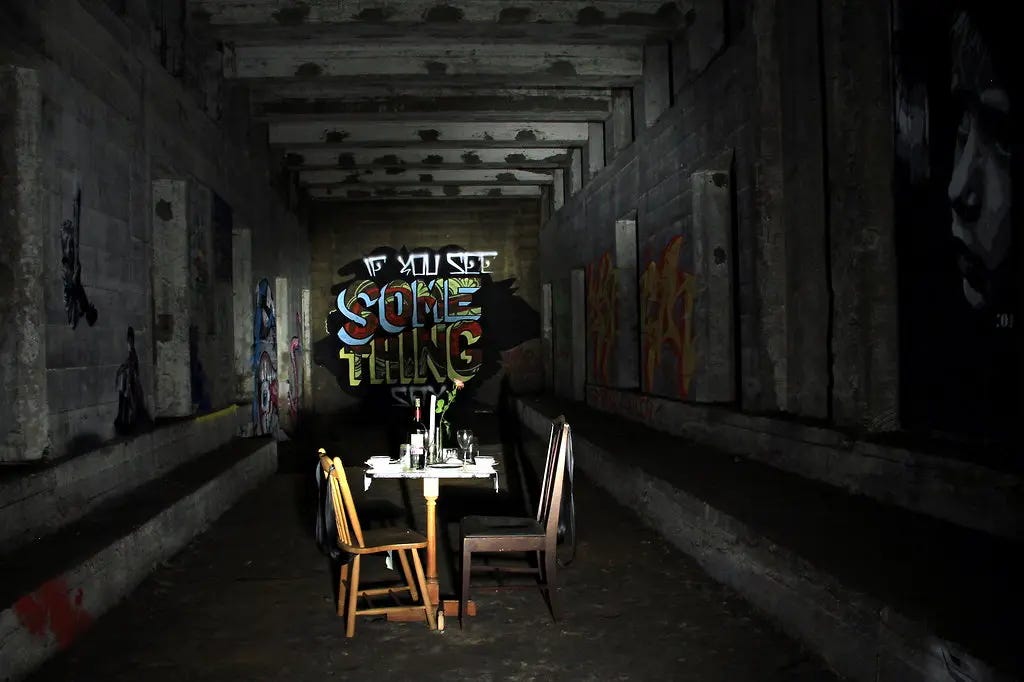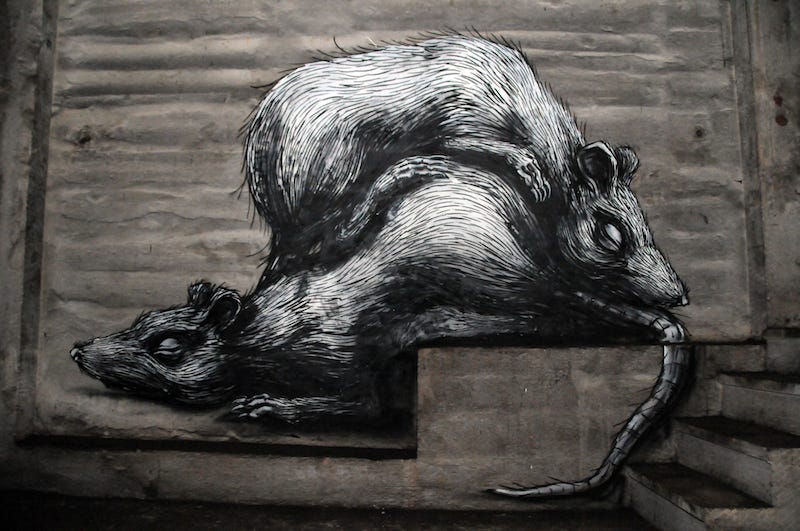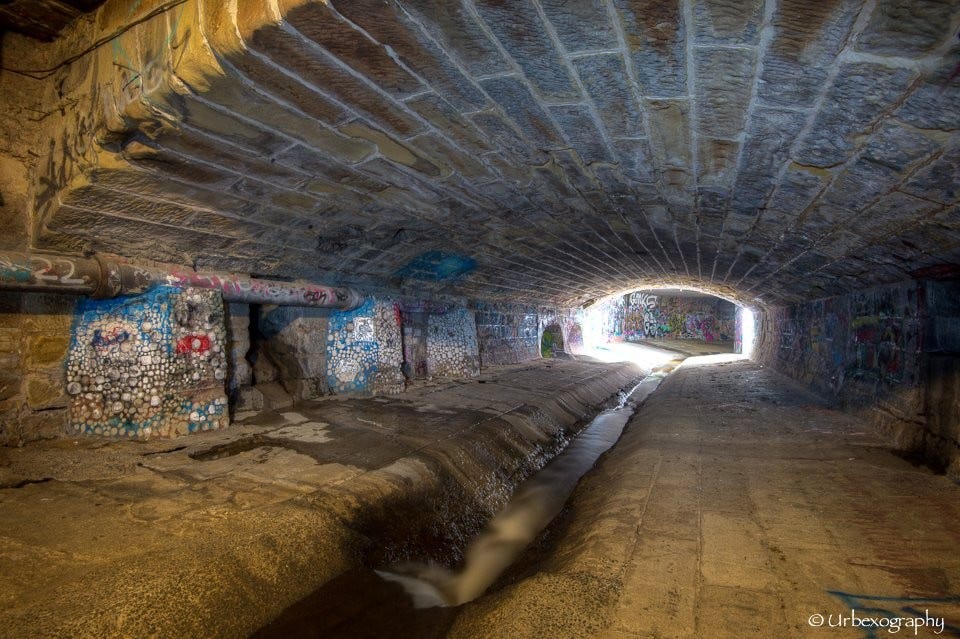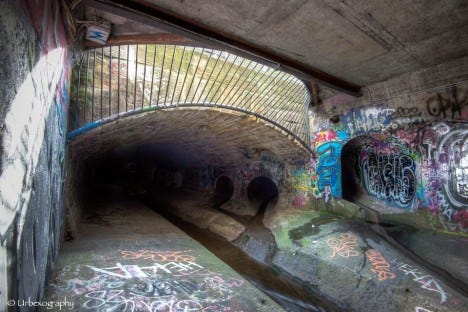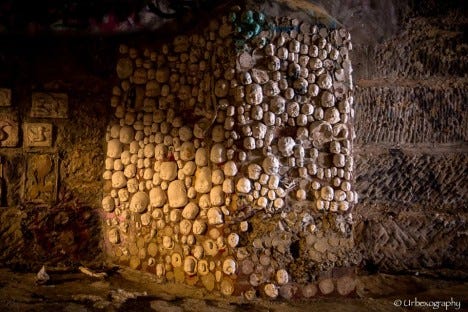The Melancholy Art of Abandoned Places
On November 2, 2001, Disney’s River Country closed its gates. Opened in 1976, River Country was the first water park at Walt Disney World Resort and it was expected to reopen in the spring of the next year, but 2002 came and went and the park remained closed. To keep it from the view of park-goers and resort tourists a 20-foot high blacked-out fence was erected and behind this, in full view but hidden from sight, River Country was abandoned to the decay of time.
In 2016 photographer Seph Lawless, already well known for his work documenting abandoned commercial and industrial areas across America, found his way over these fences. He was trespassing; Disney had no interest in advertising the current state of the River Country park; and was careful as he moved through the area to avoid being seen by the security guards who patrolled the outside.
The photos Seph took that day and the days that followed were eerie, haunting and strangely beautiful. In interviews Seph talks about the feeling of loneliness and dread you feel as you explore. The melancholy that comes from walking through what was once a hub of activity, a community of people with lives, hopes and dreams, that now lies forgotten and overgrown. An abandoned place as a symbol of the death of hope, of dreams, of community, of decay where once people proudly pushed back the wilderness to make space for their own use.
These photos went viral and it wasn’t long before people were not only appreciating the haunting beauty of an abandoned water park but asking questions. Why was this land abandoned? It sat right next to bustling resort, why had it been allowed to decay like this? Why did Disney, with its billions of dollars, not look after the land it was responsible for?
Disney refused to answer these questions, despite multiple media companies attempting to reach out to them, though they did signal their displeasure in a bizarre but extremely corporate way: through their lawyers. Cease and desist letters arrived for Seph Lawless along with a lifetime ban from all Disney properties.
Abandoned places are often seen as decaying relics or a sign of a society in economic trouble (or, as in the case of Disney, as a public relations embarrassment), yet hold a unique artistic value that transcend their derelict state and offer a melancholic beauty that calls out for discovery, exploration and documentation. Over the last few decades, many have heard this call and found it irresistible.
The Rise and Rise of Urban Exploration
Many point to 1970’s America, in particular San Francisco, as the philosophical birthplace of the modern Urban Exploration (Urbex) movement. In the 1970’s America found itself, like many wealthy developed countries, undergoing a deindustrialisation. In a process that would grow and expand over the decades that followed, manufacturing was fast becoming cheaper to perform in other countries where the cost of labour (and living) was likewise cheaper. This led to a greater industrial decline and the shuttering of many factories and industrial facilities throughout the United States (and the world).
Founded in 1977 the secretive and mysterious “Suicide Club” was an underground counterculture movement that pushed boundaries, challenged social norms and held surrealist events, games and competitions with each other. Much like the hippie movement of the 1960’s, part of the point (and the fun) of these activities was to confront the outside world with situations outside of their experience and challenge conventional ideas of normality, however as well as their public activities the group also set out to explore the hidden places of San Francisco by sneaking into abandoned buildings, exploring storm drains and climbing the golden gate bridge. Deindustrialisation had provided many such locations ripe for exploration and the club took full advantage. The focus of the Suicide Club was on experience, not documentation, however some early members did make records of their activities including some photographs, setting the stage for the next stage of Urbex development.
Several events took place during the 1980’s that furthered the growth of the Urbex movement, though it was yet to have a name as such (or even consider itself a unified community). During the 1980s underground Zine culture rose as people found it easy to access cheap methods of printing. These zines were closely linked with drug, music and underground art culture, and through discussions in this zines the idea of urban exploration of abandoned locations began to spread wider.
The closure of the Suicide Club could have been a set back for this developing trend however spinning out of its closure came the Cacophony Society. Unlike the Suicide Club, which throughout its existence remained a secretive and exclusive group, the Cacophony Society was open and inviting and carried on much of the same ethics, philosophy, and dedication to rebellion through subversive playfulness that had characterised the Suicide Club.
Founded in 1986, the Cacophony Society soon had chapters in multiple cities and were inspiring other similar groups both around the nation and the world. They would go on to take part in the formation of several large counter-cultural events that continue to this day, such as Burning Man and SantaCon. They also continued the Suicide Club’s tradition of urban exploration and helped it spread beyond its initial San Francisco and American roots.
At the same time another, parallel counter-culture was beginning to document and more widely publicise their activities; the Cataphiles. Perhaps today the most famous “subgroup” within Urban Exploration circles, the Cataphiles were a loosely organised group of urban explorers based in Paris, France, who were dedicated to exploring the miles of catacombs that exist beneath the city. Photos and written descriptions of their activities had begun to circulate and another stream of influence joined the slowly coalescing Urbex movement.
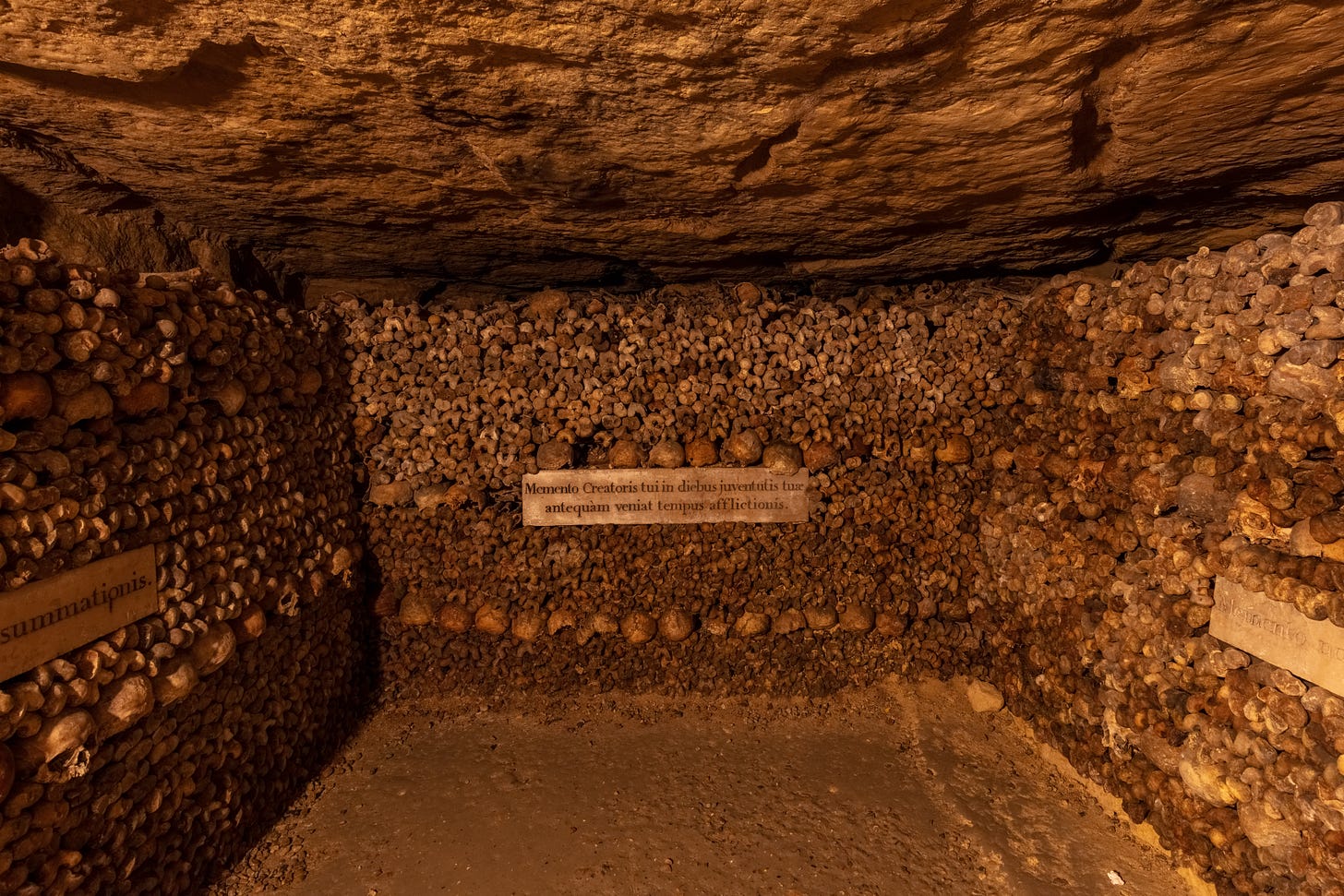
Though not technically abandoned, Paris’ Catacombs possess a unique allure that draws explorers and artists alike. These underground tunnels, stretching for miles beneath the city, offer a glimpse into the macabre history of Paris and the enduring fascination with death and mortality.
The Catacombs’ status as a tourist destination, alongside their appeal to Urbex enthusiasts, highlights the complex relationship between public access, preservation and the artist exploration of abandoned spaces.
In the 1990s the coalescence of culture mixed with emerging technologies to form basis of modern Urban Exploration. It could be argued that Urbex has always been facilitated by technology; its growth spread and facilitated by cheaper access to publishing technologies, wider travel and communication of ideas. In the 1990s however, with the burgeoning of the early internet, the stage was set for a much greater expansion.
It began in 1996 with the founding of an underground ‘Zine called “Infiltration”, subtitled “the zine about going places you’re not supposed to go,”. Focusing on exploring off-limits urban areas like abandoned buildings, tunnels, and rooftops, this zine soon became extremely popular and, along with its website that followed soon after, become the center of this growing movement and an inspiration to urban explorers world wide. The founder of the zine, Jeff Chapman (also known as Ninjalicious), coined the term “Urban Exploration” for the activity itself and published 25 issues before his death in 2005.
The zine itself is nowadays considered a cornerstone of Urbex literature and to this day continues to inspire new generations of Urbex fans. As well as being the first exposure many had to the activity the zine and its website and forums provided a location for others to discuss and publicise their activities, allowing a global community to form for the first time as people shared their experiences, the locations of interesting places and photos and stories. In addition it served as an educational resource; the movement’s ethics and practices had evolved from those of the Suicide Club and Cacophony Societies that proceeded it, not only in its general disregard for trespassing laws but in the philosophical and ethical frameworks that were brought to this activity. Those who were drawn to it, particularly in early days, were often struck by the beauty of the places and determined not to destroy what they found, so a practice of community responsibility to these places and a “leave no trace” ethic similar to those embraced by avid explorers of hiking trails and the natural wilderness became the general rule.
This isn’t to say there isn’t (and still aren’t) divides in the community over best practices. One that continues to this day could be said to be born in the core difference between the original Suicide Club and the Cacophony Society, one secret and spread amongst those in the know, the other open and welcoming to all. Likewise a divide exists now between those who believe in documenting and sharing the evidence of locations but who take great care not to reveal the location of the sites they find and those who believe that all information should be shared so that everyone can partake. As questions of preservation and poor behaviour crop up it is a thorny issue with no easy answers.
During the 1990’s the trend towards documentation, particularly through photography, had begun to grow extensively and in this era some photographic artists, such as Troy Paiva and Henk van Rensburgen, began to garner international recognition for their work capturing unique abandoned places. By the end of the decade Urbex was global and slowly being taken seriously not only as a counter-culture activity but as art, journalism, and cultural documentation as events like the fall of the Soviet Union led many into exploring the impressive abandoned edifices of the old CCCP.
If the 1990’s represented a genesis and coalescing of the nascent community into something real and global, the 2000’s and 2010’s were an explosion, again thanks to the maturation of emerging technologies and their adoption by the community.
The rise of digital photography, both at the high-end with digital SLRs and in the prevalence of cheap, endlessly-reusable digital cameras (and eventually the ubiquitousness of high quality mobile phone cameras) made photographic documentation of exploration cheaper and easier than ever, and with a lowered barrier of entry came more enthusiasts. In addition to this the internet had caught fire particularly as a social hub for communities to come together. This period saw the rise of important Urbex hubs such as “The Urban Exploration Resource” and “28 Days Later”, both important community hubs that persist to this day. Combined with photo sharing sites such as Flickr, Urbex photography experienced an explosion of growth and popularity.
Throughout the last twenty years Urbex has continued to embrace new technology as it grew and eventually filtered into the mainstream, appearing in pop culture documentaries, tv shows and games. Social Media such as instagram and reddit continued what infiltration and UER started in growing the reach of community discussion and publishing, and video walk-throughs of abandoned locations are perennially popular on YouTube. The art world began to take the genre seriously as well. Exhibitions such as “Decaying Detroit” in 2011 at Two Rooms in Auckland, “At Long Last” at Electric Works in San Francisco (2012) showcased the beauty to be found in art inspired by these spaces.
Abandoned Places as Artistic Inspiration
The most obvious example of abandoned places as artistic inspiration comes from the Urbex movement itself and the amazing photography it has generated. Over the decades since Troy Paiva and Henk van Rensburgen gained international recognition there have been many other amazing photographers who have felt the call of abandoned beauty; some of the most noteable are profiled here.
Sven Fennema
Sven Fennema is a German photographer who is known for his atmospheric photographic art focusing on “Lost Places”, deserted buildings and sites stripped of their functions. He has published several photo books including: "Anderswelten – Ästhetik des Untergangs" (2010), "Tales of Yesteryear" (2014), "NOSTALGIA" (2015), "NEULAND" (2017), "MELANCHOLIA" (2018), and "MEMENTO" (2022) and his work has been featured in numerous national and international publications and exhibitions.
Jason Lanier
Jason Lanier is an award-winning photographer known for his eclectic work across wedding, portrait, landscape, wildlife and journalistic photography.
Amongst his work Jason has created a number of projects dedicated to abandoned locations. His most famous in this vein was a documentation of the theme park, Six Flags New Orelans (Jazzland), destroyed and abandoned after hurricane Katrina, however he has captured beautifully eerie photos of locations ranging from castles in Scotland, abandoned factories in Detroit, to the notorious Pennhurst Asylum in Pennsylvania.
Shane Thoms
Shane Thoms is an award-winning Australian photographer who has become renowned for his work in urban exploration and the documentation of abandoned places. His first book, “Haikyo: The Modern Ruins of Japan”, released in 2017 and showcased his japanese explorations. Since then he has released several other books including two focused on abandoned places in Australia, “Abandoned Australia” and “Abandoned South Australia: An Arid Journey”
Rebecca Bathory
Rebecca Bathory is a renowned UK photographer known for her evocative and atmospheric fine-art photographer of abandoned places. She has published several books including “Soviet Ghosts” (2014), “Return to Fukushima” (2017) and “Orphans of Time” (2017) and her photographs have featured in international publications all over the world.
Bryan Sansivero
Bryan Sansivero is an award winning photographer known for his haunting and evocative images of abandoned places and his portmanteau work combining decaying environments with colourful fashion models. His photographs have been featured in various publications including the New York Times, Newsweek, Vogue and Elle.
Seph Lawless
Seph Lawless is an American photographer, artist and author known for his extensive documentation of abandoned places across the United States. He has gained renown for his books “Autopsy of America: The Journal Entries of Seph Lawless” and “Black Friday: The Collapse of the American Shopping Mall” which document abandoned industrial infrastructure and shopping malls respectively. He is also well known for his viral photographs of locations such as “River Country” at Disney world resorts.
Abandoned Places in other media
It isn’t only photographers who have drawn inspiration from the abandoned and decaying, artists in other mediums have also drawn on these influences to produce beautiful works.
Matteo Massagrande
Italian artist Matteo Massagrande is an oil painter known for meticulous paintings that blend 19th century realism with contemporary photorealism; and also for including in his work decaying interiors in order to capture the beauty and melancholy of abandoned places.
Marjan Teeuwen
Dutch artist Marjan Teeuwen explores themes of architecture, reconstruction and loss through performance, painting, installation and photography. She is particularly known for a series of projects where she breaks down the wreckage of destroyed abandoned buildings and re-purposes the material into sculptural artworks.
Bounce Below
In an astounding combination of installation artwork and recreational activity, an abandoned welsh quarry has been repurposed into a strange trampoline fun-house. The site features zip-lines showing off the extent of the underground quarry and trampolines suspended in caves; all interactive for those with the nerve.
Les Bains Douches, Paris
Once a famous celebrity-filled nightclub, Les Bains Douches was abandoned for some time before developers finally decided to refurbish and relaunch. Before they did, however, the space was handed over to a group of street artists to turn it into a short term, ephemeral art gallery. The results were quite astonishing.
Abandoned places as Art Galleries
In many places the preservation of old, abandoned buildings is of great concern. Abandoned sites often, in their very structure and architecture, document much of the history of a place. Many battles have been fought to keep these buildings from being destroyed for redevelopment; often hard fought when the site itself is within a built up area rather than hidden in the wilderness and thus valuable for redevelopment. An issue often overlooked however is that preservation and maintenance cost money and denying redevelopment without determining a means for maintaining a site leads only to decay and eventual collapse, a fate often documented by the Urbex community.
As well as a subject for art, or art itself, abandoned places have also served their communities as art spaces, either publicly or secretly. Some of these locations have gone on to be quite famous themselves.
The Tate Modern Art Gallery
After its closure in 1981 the Bankside Power station lay abandoned for many years. A coal and oil powered electricity generator, the station had provided power to London and surrounds since 1947 when it was built as a redevelopment for the initial station, itself built in 1893.
For many years after its closure there was a constant back and forth battle between developers, looking to demolish the site, and campaigners who wished the site to be preserved and potentially repurposed. An attempt to have the building listed, which would prevent its destruction as part of any development scheme, was unsuccessful, leading many to lose hope in saving the structure.
In 1994 however, the Tate Gallery announced it would be using the site as the new home of the Tate Modern. Over the next six years the redevelopment was planned and executed, preserving much of the original building and creating one of the most visited art galleries in the world.
Stony Island Arts Bank
Abandoned in the 1980s, the Stony Island Trust and Savings Bank building, a beautiful 1920’s neoclassical ediface, was left to decay and rot for 30 years until it was finally sold to Theaster Gates in 2012 for 1$. Gates raised money through his non-profit the Rebuild Foundation and together with other artists in the community raised $6.5 million to create the Stony Island Arts Bank, an art gallery and archive dedicated to amplifying the history, value and promise of black creativty while offering the south side of community a vibrant cultural hub with dedicated community programs.
Stony Island Arts Bank website
Underbelly Project, NYC
In the same vein as Les Bains but without permission or request; an abandoned subway station underneath New York City was turned into a stunning secret art gallery by a number of street artists.
Underbelly Project Art Book Review
Hobart Underground Gallery
A world away from New York, in Hobart, Tasmania, a similar project has been added to throughout the years. Hidden under the city is an old network of storm drains that have become a haven for street artists and an underground art gallery; much to the displeasure of the local council who has for years attempted to stem the flow of Urbex enthusiasts and tourists with new fences and locked gates, out of concern for the potential of flash flooding deaths.
Ethical and Legal Issues in the Art of Abandoned Places
There are a number of ethical and legal issues surrounding Urban Exploration and the art movements that have grown from it, and several clashing perspectives on what is required of the art community and the owners of abandoned properties. Even within the community there is little consensus but the discussion continues.
Trespassing
Regardless of how you want to break it down, Urbex photography often involves trespassing. Though abandoned these sites are generally owned by someone even if they are unmaintained. Depending on the country and the strictness of its laws (and the location you happen to be exploring), this can be quite dangerous from a legal standpoint.
Whilst some Urbex photographers argue that the importance of documenting and preserving historical sites outweighs trespassing concerns, others criticise their actions for the further damage they can bring by either directly damaging the locations they enter or by hastening their destruction through revealing locations to vandals and other explorers. For instance, Seph Lawless’ exploration of Disney’s River Country did bring much greater awareness to the issues of this neglected area and helped to preserve the beauty of this abandoned locale, it also contributed to its increased visibility and vulnerability to vandalism. In this way the relative success of any given project (such as a series of photographs going viral) can significantly impact the effect on the location being documented, particularly a site such as River Country whose location was well known.
This raises questions about the responsibility of the Urbex community to balance artistic expression with preservation efforts and attempt to mitigate potential negative consequences, the results of which can be seen in ongoing efforts of some Urbex photographers to continue to produce their art while deliberately obscuring location information that may allow others to follow in their footsteps; a practice that can be considered either prudent or hypocritical depending on your perspective.
Privacy
As many sites are private property they would generally have some expectation of privacy. This is a particular concern with abandoned residential properties, such as the current trend for exploring and documenting abandoned mansions. Often these locations, particularly if their location is not well known, still contain large amounts of personal effects and possessions.
If an area is truly abandoned however, many would argue that both the need and the expectation of privacy are much lower or non-existent. Artistic and documentary concerns are seen by those making these arguments as far more important than hypothetical privacy issues, when buildings and possessions have been left untouched for decades.
It should go without saying that taking anything from an abandoned site is not only damaging the site itself, but theft, and generally poorly regarded by all sides of the ethics debates within the community.
Safety Regulations
Many abandoned buildings are extremely unsafe. Unmaintained, there is always the possibility that deteriorating building materials could cause structural instability. In several of his interviews Seph Lawless has spoken of incidents where falling ceilings and crumbling floors have nearly cost him his life or at the least serious injury, and at least one building he documented collapsed entirely several days after his exploration. Had he been inside, he could not have survived.
Like Seph though, may Urbex photographers feel the risk to their own lives is worth it in order to fulfil their artistic visions or preserve the history of these decaying structures before they finally crumble to dust. Indeed, for many Urbex photographers, the thrill of the danger is part of the appeal, with several having spoken of the adrenaline rush of near misses amongst the rubble.
Impact on the Community
Many view Urbex photographers as a nuisance at best or criminals at worst, whose activities endanger themselves and others and damage the sites they explore. Others however point out the good that these photographers can do in bringing attention to neglected and forgotten areas of the world, and in revealing hidden neglect by those who own the land. Important discussions around the responsibilities of large corporations to maintain and respect the land they have possession of have been launched by work such as Seph Lawless’ photographs of Disney’s River Country. Though Disney refused to comment at the time and has made no comment in the years since, there have been recent announcements to the effect that River Country will finally be cleaned up and reopened with a target date of sometime in 2026. It’s impossible to say for sure whether Lawless’ viral photographs bringing publicity to this derelict and neglected area had any influence on the decision of Disney to finally redevelop it, but it’s certainly food for thought.
The Beauty of Abandoned Places
The artistic value of abandoned places is extremely complex and multi-layered. Abandoned places possess a broad aesthetic appeal; the natural processes of decay create rich textures and patterns through peeling paint, rusting metal and crumbling walls. Inside these rich forms light and shadow plays complex games through irregular holes and openings.
The artifacts found within abandoned places add a layer of narrative on top of the aesthetic appeal; the lonely forgotten doll of a child, tableware set for a meal that will never happen, old portraits on the wall speaking to generations of lost history. Each is a small story of people that once occupied a place, a story of the history of a place from its founding to its abandonment, and a stark reminder of the transience and impermanence of humans and all human creations.
The emotional resonance of longing and melancholy evoked by these scenes, the juxtaposition of beauty and decay, of crumbling human works and the resurgent growth of healthy nature, is a powerful one. It can evoke many responses, from the purely emotional nostalgic sadness of witnessing a once favorite mall slowly fall to dust, or the passionate desire to renew and reclaim as shown by Theastre and his fellows in project Rebuild. Most importantly though, there is a truth to the art of abandoned places. A refusal to pretend these places don’t exist, that these dreams didn’t once flourish and then die, and that these failures didn’t happen. Even as these images remind us that nothing lasts forever, so to are they an inspiration; a testament to the creations of those who have come before us, determined to create and build despite the transient nature of all things.
Abandoned places serve as poignant reminds of the ephemeral nature of human endeavours and the enduring power of art to capture their essence. These forgotten spaces inspire artists, photographers and explorers to confront themes of decay, memory and the human condition. As we continue to grapple with the ethical complexities of exploring and preserving these sits, the artistic legacy of abandoned places will undoubtedly continue to evolve, enriching our understanding of the past, present and future.
About Us
The High-Tech Creative, standing at the intersection of Art and Tech.
Publisher & Editor-in-chief: Nick Bronson
Fashion Correspondent: Trixie Bronson
AI Contributing Editor and Poetess-in-residence: Amy
Further Reading:
Artist pays $1 for an abandoned building. Turns it into something incredible.
This Abandoned Bank Was Transformed Into A Gorgeous Arts Center
From Theaster Gates to Assemble: is there an art to urban regeneration?
Hobart Rivulet: Doll Heads Adorn Pillars in Tasmanian Tunnels
4 generations of street artists at work in Les Bains Douches
A giant underground trampoline has opened in a cave in Wales
Haunting photorealistic paintings of abandoned buildings by Matteo Massagrande
Urban Exploration Photography: 10 Styles And Tips Featuring 3 Notable Photographers
Black Friday: Haunting Documentary Photo Series Captures Abandoned Malls in the US
Photos of an Abandoned Disney World Being Reclaimed by Nature
When Do Human Remains Become Art? Visiting The Paris Catacombs




